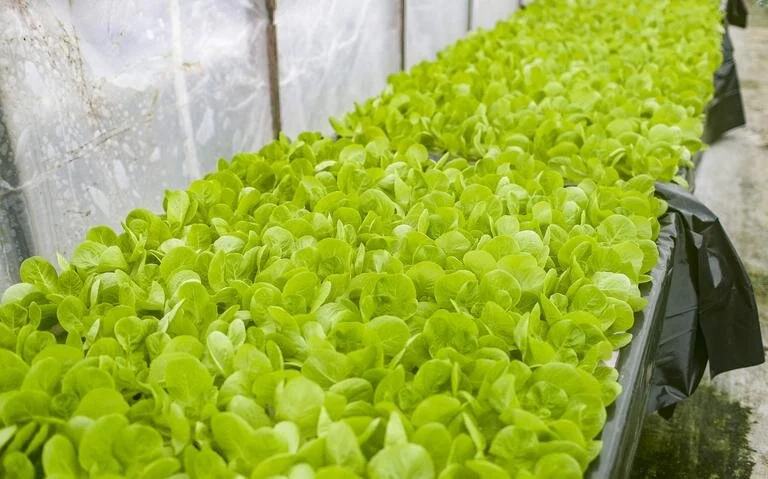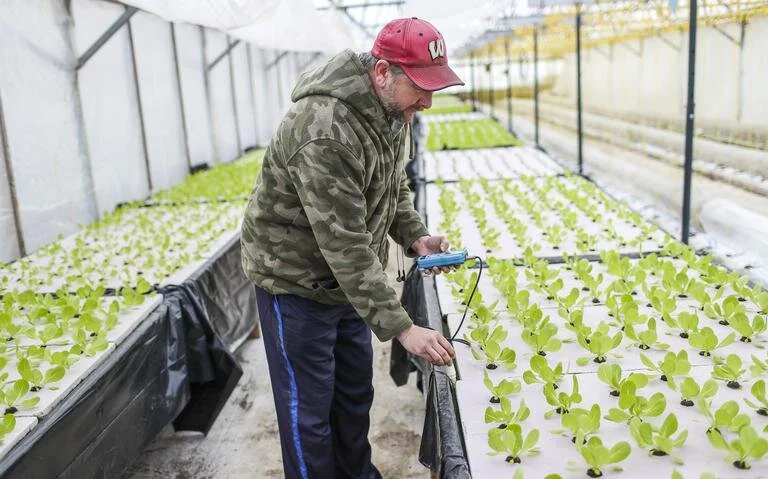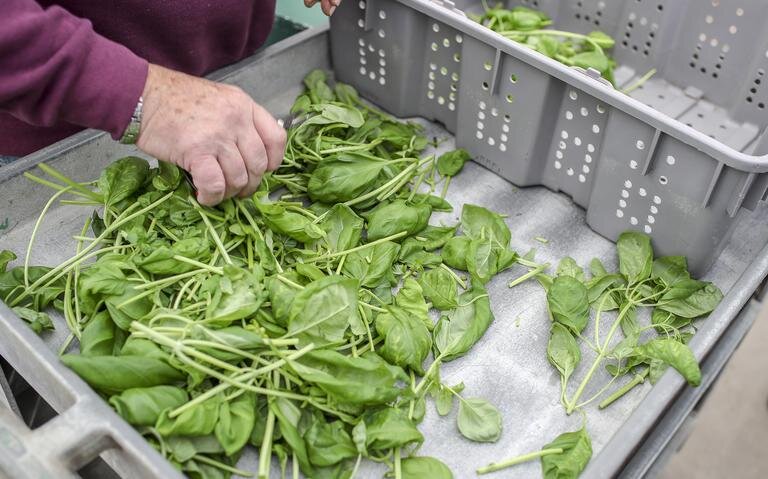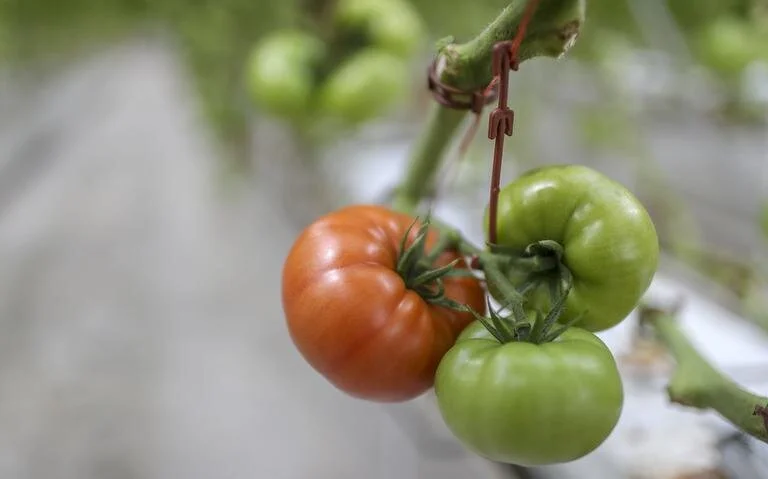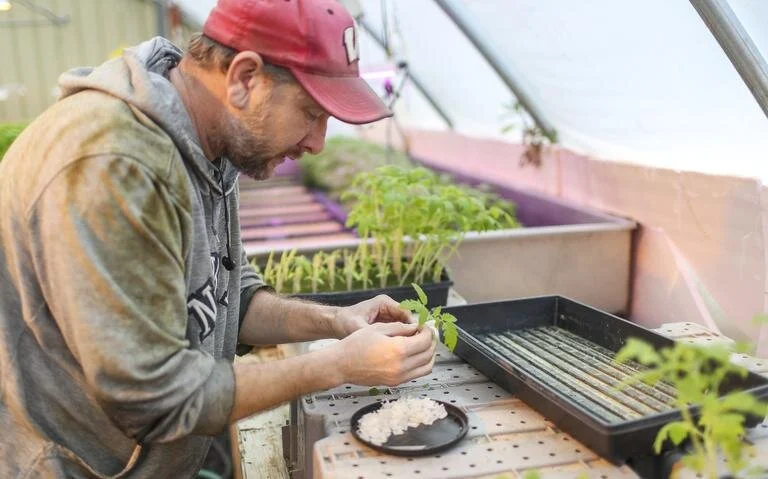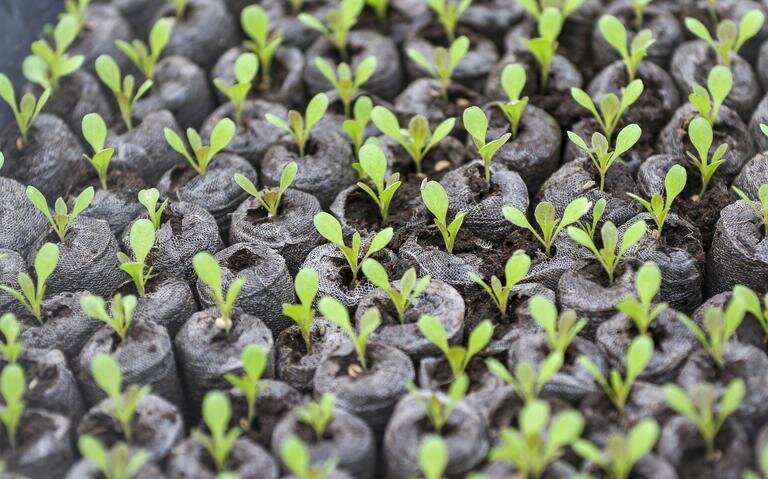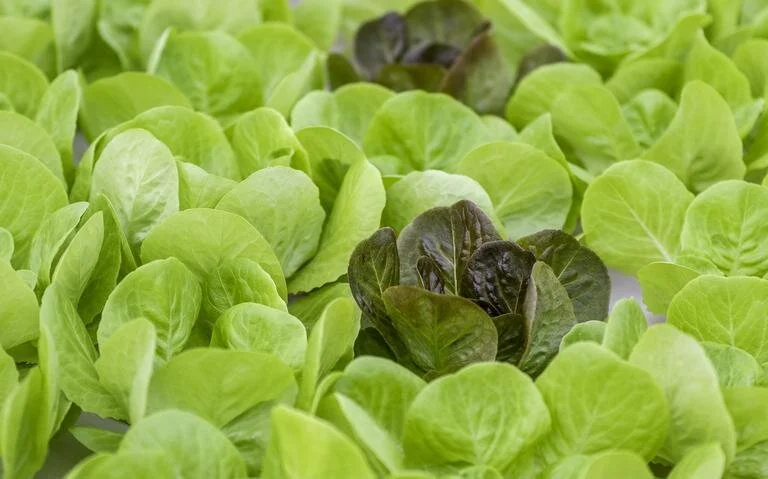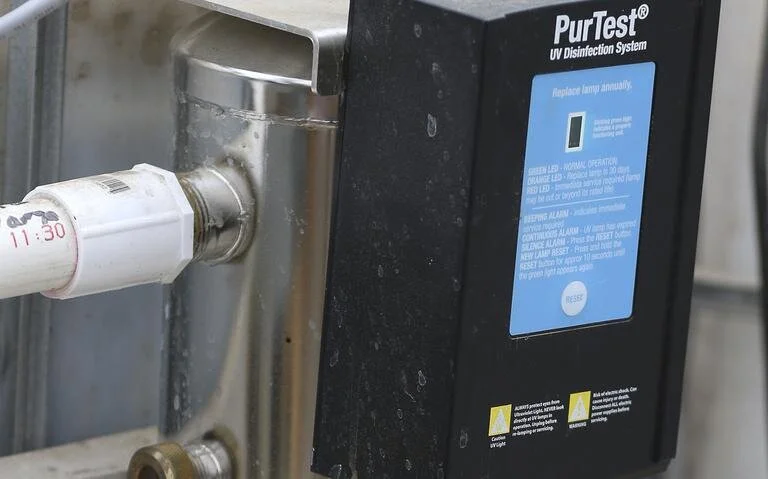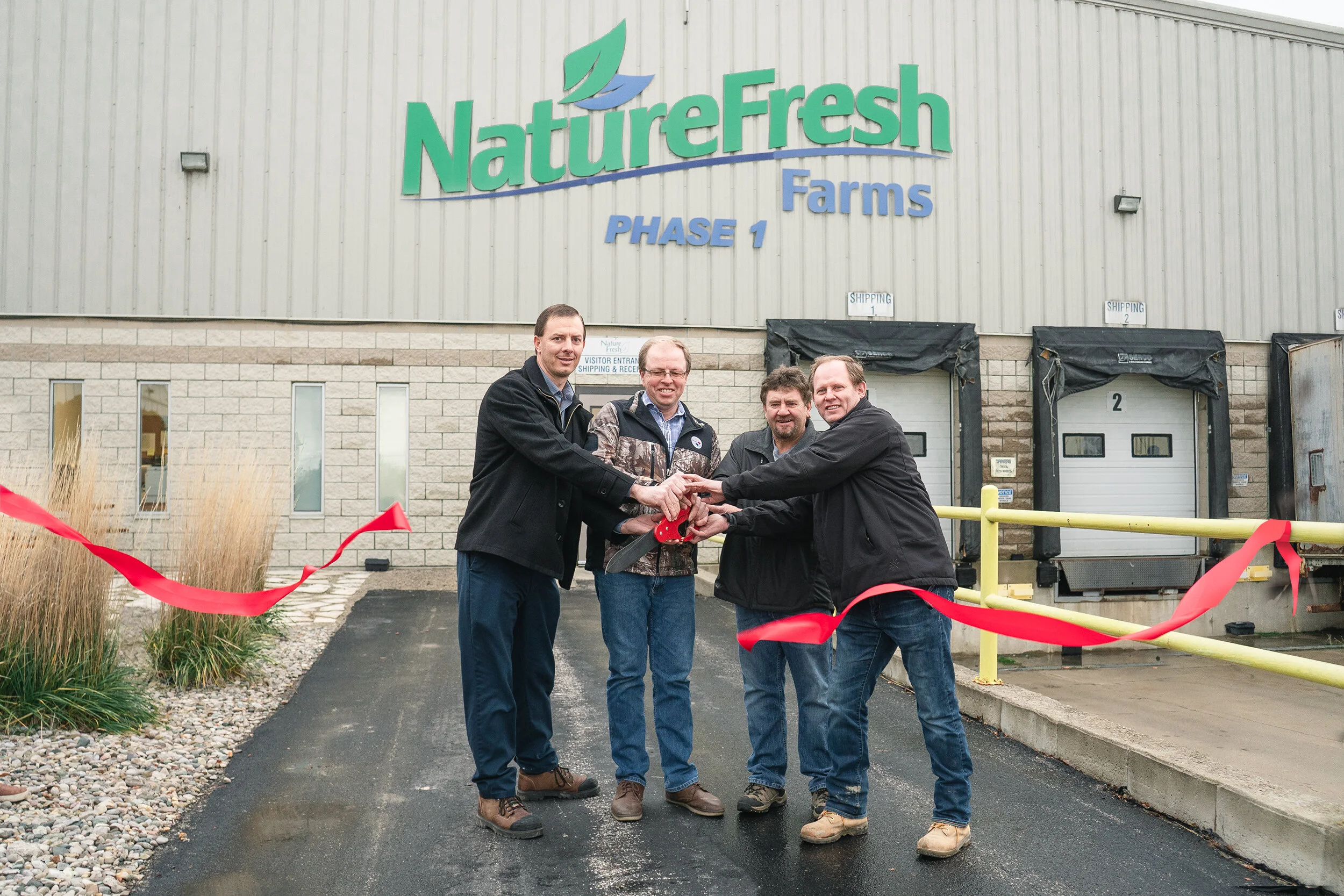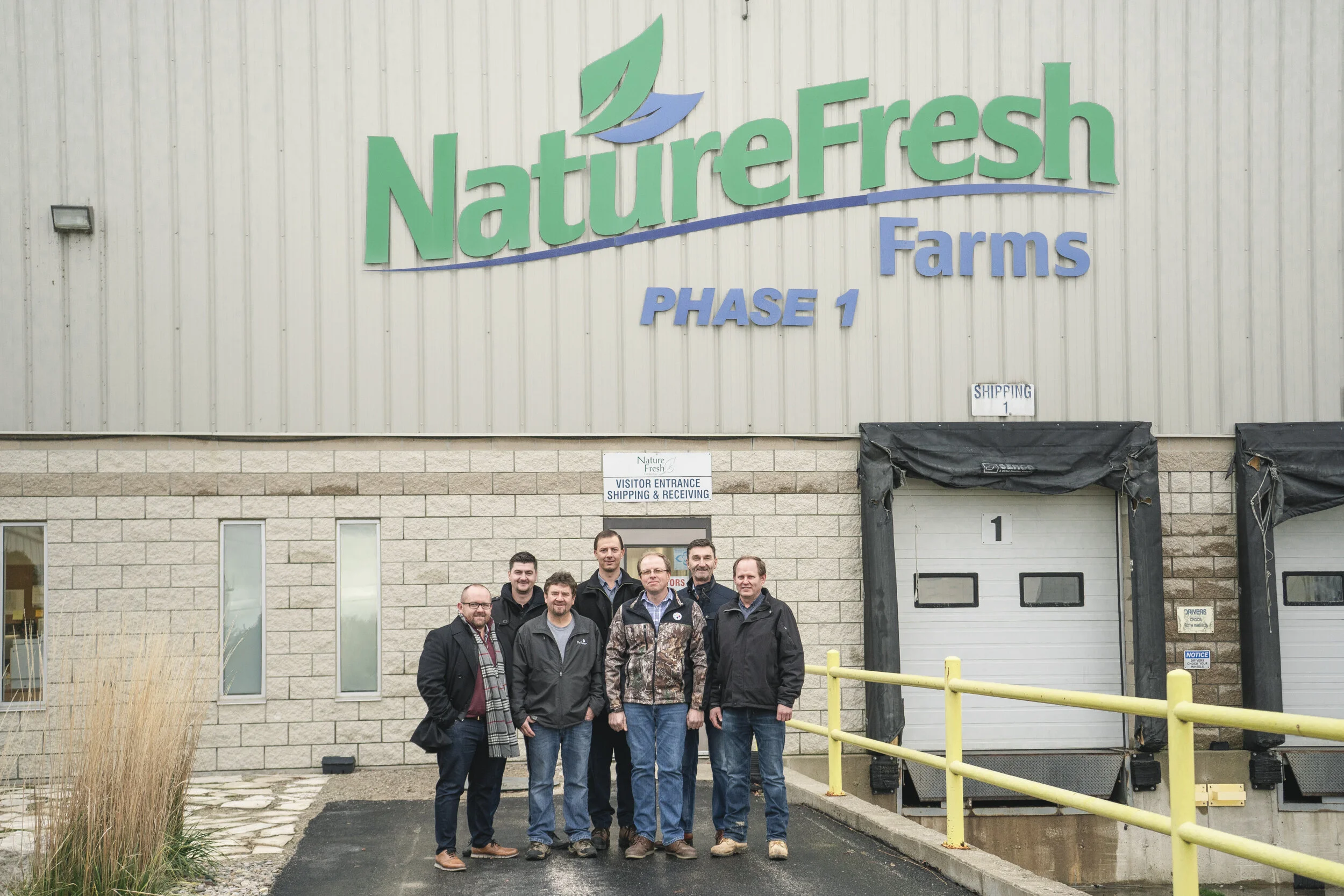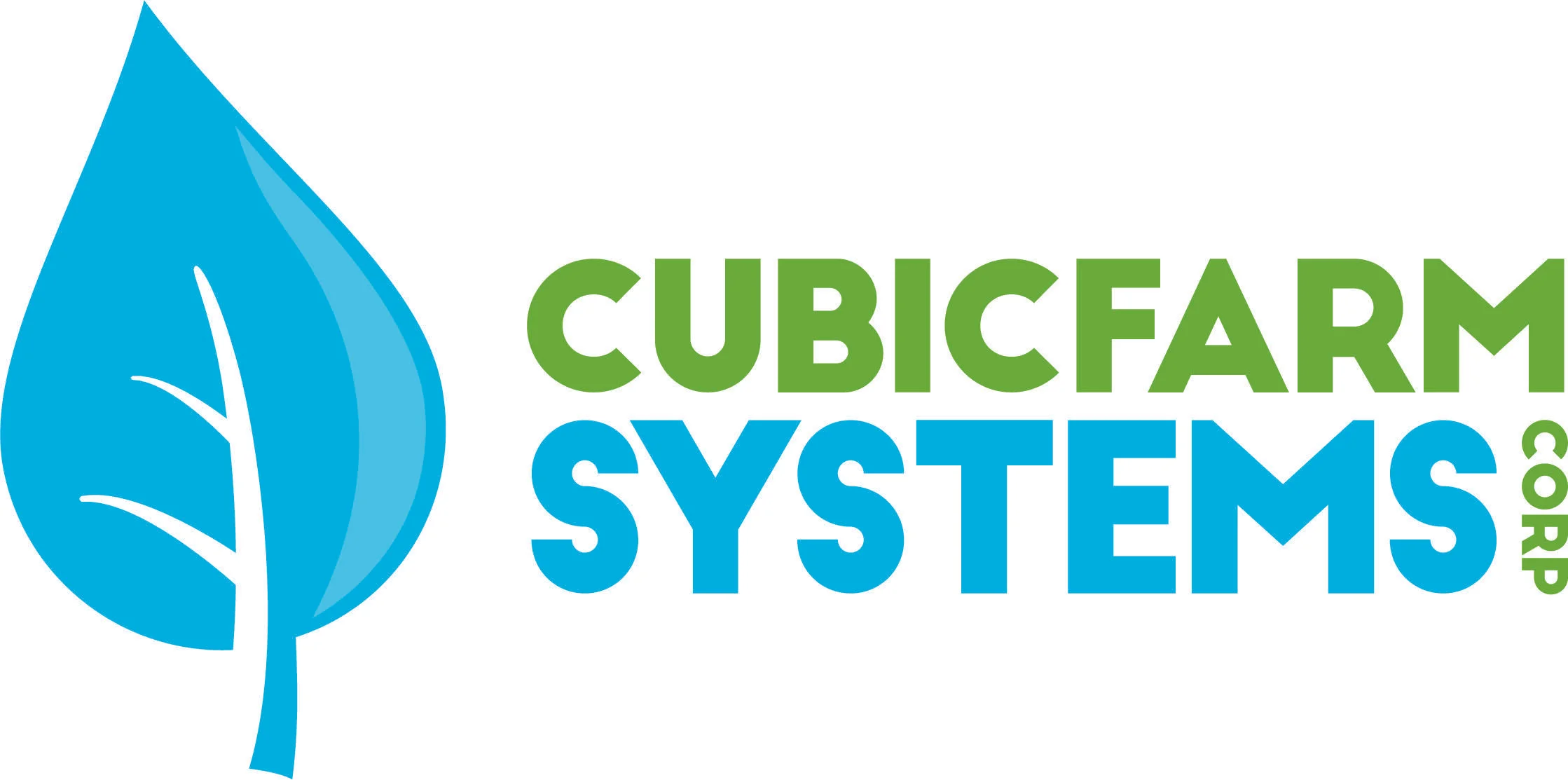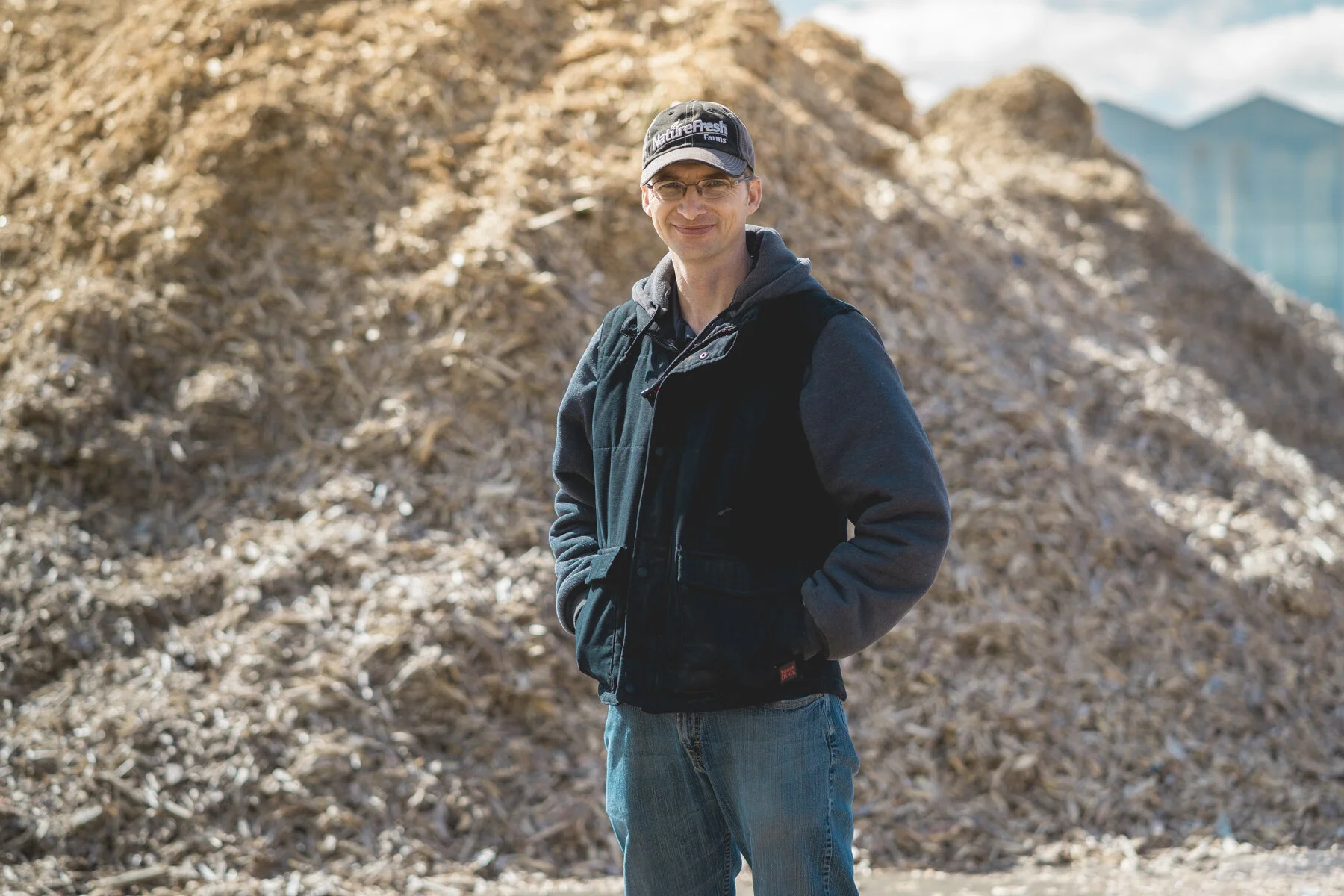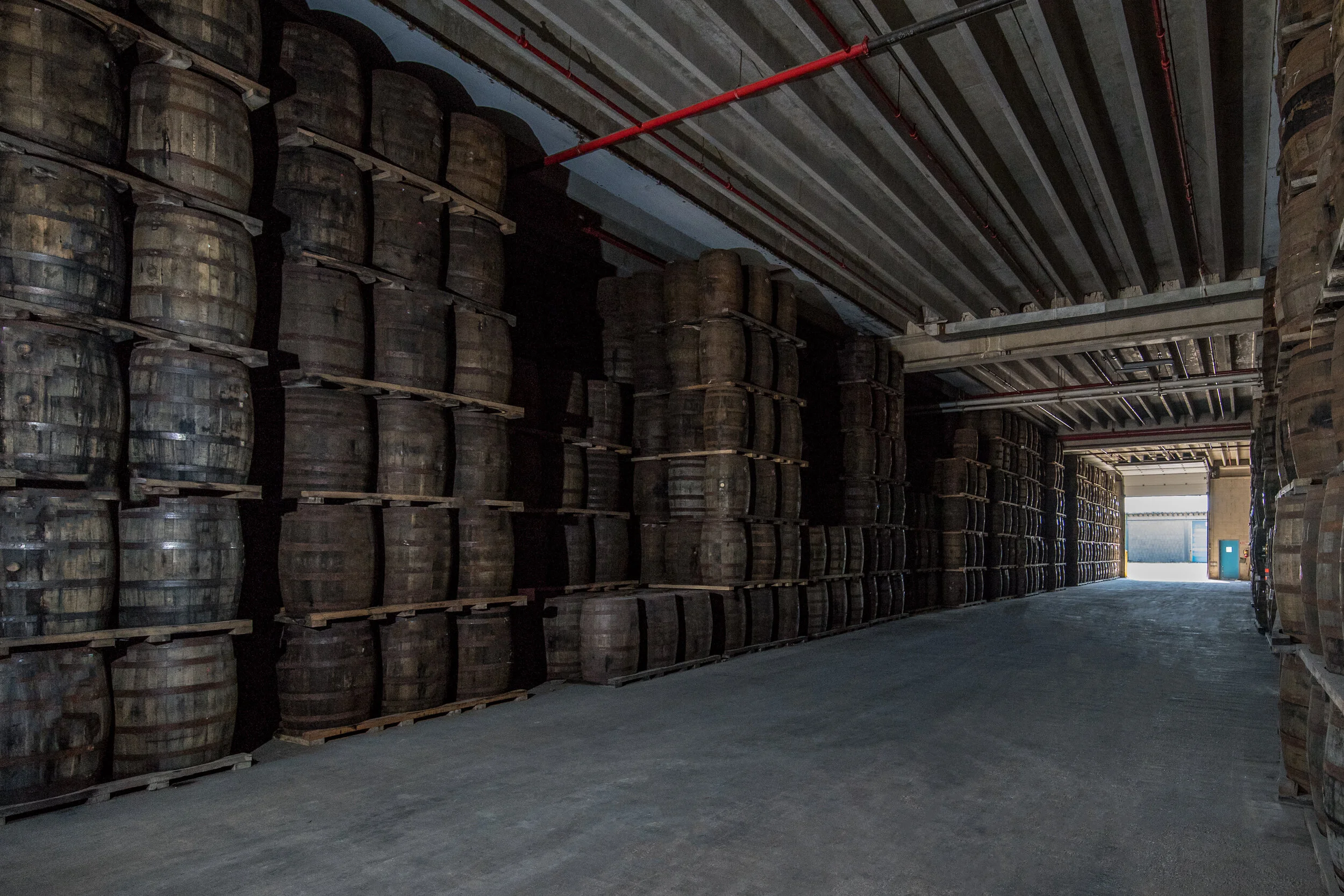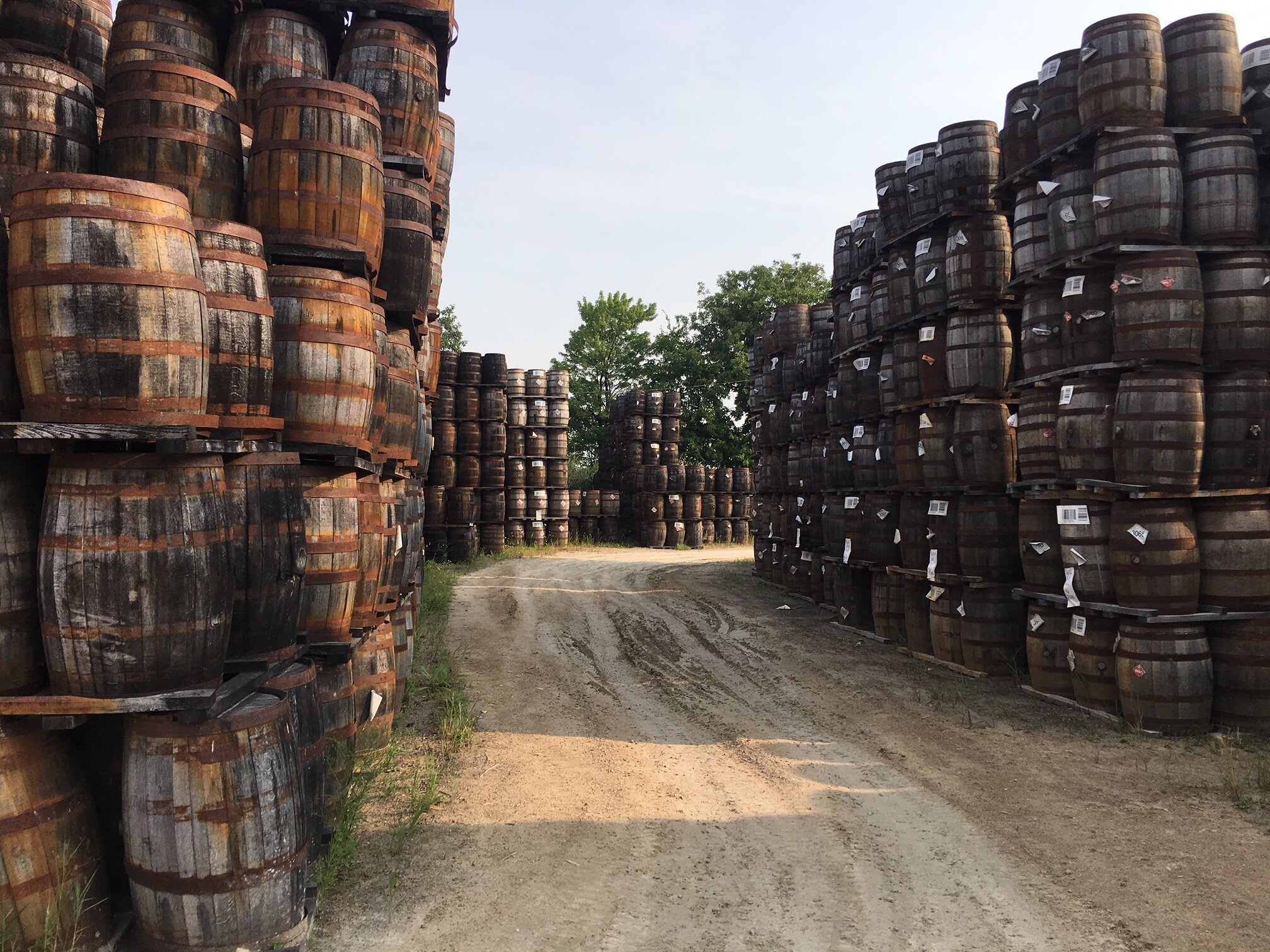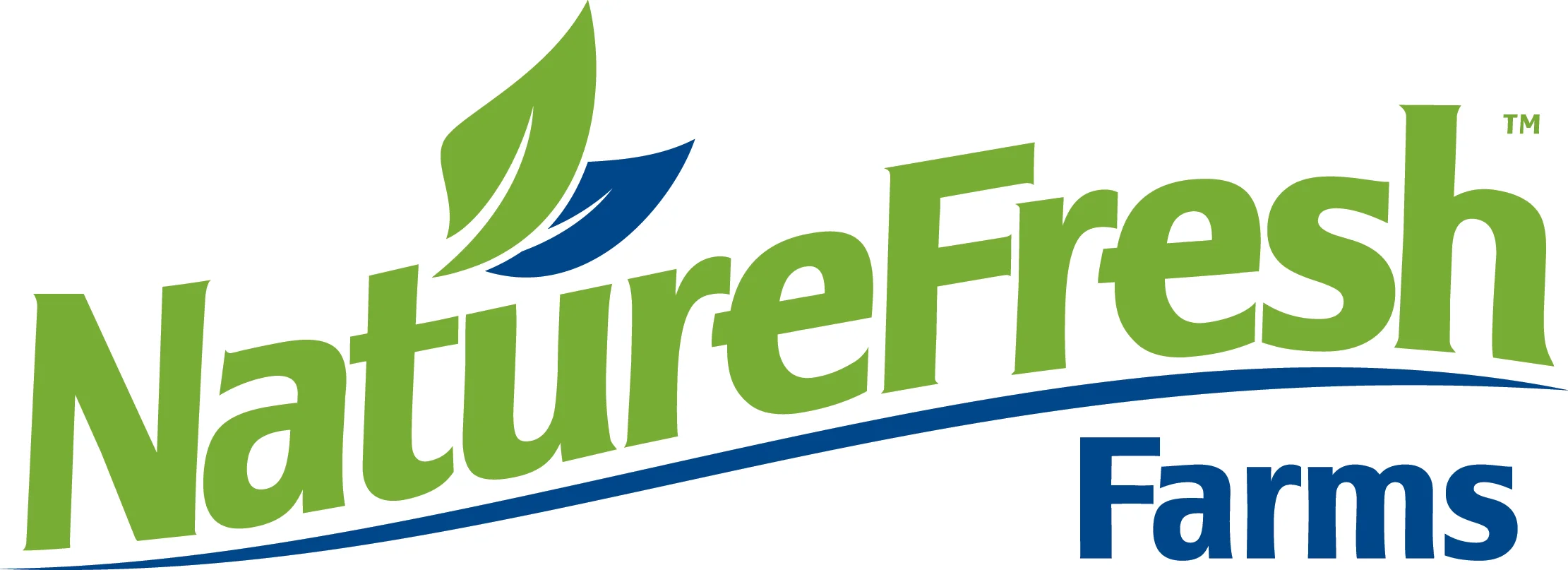
Welcome to iGrow News, Your Source for the World of Indoor Vertical Farming
ITALY: Competition Open To Create A Sky Farm In Turin
Myplant & Garden and Fondazione Minoprio, in cooperation with the real estate investment firm SATAC SIINQ S.p.A., which operates under AEDES SIIQ S.p.A., have announced a creative design competition to create a sky farm on a portion on the rooftop of the new destination centre Caselle Open Mall (COM) in Turin
Amy Fitz-Hugh December 23, 2019
Myplant & Garden and Fondazione Minoprio, in cooperation with the real estate investment firm SATAC SIINQ S.p.A., which operates under AEDES SIIQ S.p.A., have announced a creative design competition to create a sky farm on a portion of the rooftop of the new destination centre Caselle Open Mall (COM) in Turin.
The large rooftop garden ( 3,900 sqm) will be dedicated to the learning and spreading of new techniques and technologies for the cultivation of flowering plants and vegetables, both outdoors and in the greenhouse.
The green area will have to include educational and sensory paths. As well as to devise the presence of traditional and automated vegetable gardens, as well as transparent structures for hydroponics, aeroponics, and aquaponics.
The green area, accessible through a panoramic elevator, will welcome visitors of the new mall as well as charities, associations, and schools for didactic, environmental education and sense-rehabilitation projects. With this in mind, also an indoor 100-sqm area dedicated to educational projects such as workshops, didactic activities and labs will have to be developed.
The candidate projects will have to take into consideration the following requirements:
– zero impact on the environment
– low maintenance
– ample use of low-emission equipment
– ample use of plants.
The deadline is 9 February 202 and on 26 February 2020, on the opening day of Myplant & Garden, the first three winning candidates will be announced. The winner of the first place in the competition will receive a € 10,000 prize, and the second and third will receive a prize of € 2,500.
If SATAC SIINQ will decide to build the winning project, that could start approximately in 2022, the designer will be called to coordinate the project with the role of artistic director.
Lettuce Scare Spurs Sales At Superior's Bay Produce
Recent outbreaks of foodborne illnesses have generally been bad news for lettuce growers nationwide, but one greenhouse operation in snowy Superior reports its sales actually have been bolstered as consumers search for healthy alternatives to field-grown greens
Written By: Peter Passi | Dec 21st, 2019
Greenhouse with a mission delivers safe greens to the local market.
Rich Fisher, Bay Produce's head grower, checks the pH level of the water in flats growing butterhead lettuce at Bay Produce in Superior. (Clint Austin / caustin@duluthnews.com)
Recent outbreaks of foodborne illnesses have generally been bad news for lettuce growers nationwide, but one greenhouse operation in snowy Superior reports its sales actually have been bolstered as consumers search for healthy alternatives to field-grown greens.
Bay Produce, located next door to the Mariner Retail and Business Center, has found a strong market for the red and green butterhead lettuces it grows in the wake of a national lettuce scare.
"It seems like any time there's a lettuce recall, our sales go up," said Don Gitz, a specialist for Bay Produce.
Most recently, the U.S. Food and Drug Administration warned consumers to avoid eating romaine lettuce harvested in California's Salinas Valley — a prolific agricultural region often referred to as the nation's salad bowl. This latest E. coli outbreak resulted in more than 100 reported cases of illness in 23 states. But regulators advised people that there was no reason to avoid hydroponic and greenhouse-grown lettuce.
8 / 8
The silver tube at the center of the photo houses a high-intensity ultraviolet light used to kill pathogens in the water at Bay Produce in Superior. (Clint Austin / caustin@duluthnews.com)
Bay Produce fits that bill to a T. It grows lettuce, basil, tomatoes, cucumbers, peppers and eggplant inside a 1 1/2-acre greenhouse equipped with hydroponics.
Rich Fisher, Bay Produce's head grower, said the greenhouse uses Superior city water that has been treated with ultraviolet light, rendering it "99.9% microbe-free."
He contrasted the sterile greenhouse setting at Bay Produce to farm fields where lettuce is often grown on plots adjacent to livestock "where they really have almost no control over runoff."
In addition to producing a consistently safe and tasty product, Bay Produce also has a story to sell. The greenhouse is operated by Challenge Center Inc., an organization established by Catholic Charities 50 years ago to serve children and adults with developmental disabilities. The greenhouse is staffed with 10 Challenge Center staff members and up to about 40 clients at any given time.
Challenge Center Director Mark Kroll said the greenhouse provides a sheltered work setting that can accommodate clients' unique needs, whether that's a short two-hour shift or one accompanied by a job coach.
"We provide sheltered employment for folks with disabilities," Kroll said. "It's an amazing program we have here. So, we already have a lot of local folks looking for our projects anyway, because they support our mission. But this provides a little extra push for us. It's one more reason for folks to look for Bay Produce products."
Bay Produce has enjoyed a safety edge over larger growers in regard to other products, too. For instance, earlier this summer people across the nation were sickened with cyclosporiasis from contaminated basil grown in Mexico. Again, Bay Produce offered a safe alternative.
"It's amazing how things that happen on a national scale that make the national news can really affect local growers," Kroll said.
Bay Produce distributes its products exclusively in the Northland through grocers and restaurants as far north as Grand Marais and as far east as Ashland. Because its produce isn't traveling great distances, Kroll said they are able to deliver a product that's ripe and ready to eat the moment it hits the shelves or lands on a restaurant's sandwich.
Christmas Lists To Santa Claus Ask For Mini Munchies
“This holiday season, something magical happened, even more magical than usual. At the North Pole, we were getting letters from kids but something was different. Instead of the remote-control cars, video games, or super doll, it was all about the Mini Munchies™”, said Bernard, Head Elf, The North Pole
Leamington, ON (December 20th, 2019) – Kids of all ages are making their Christmas lists for the holidays but one item that Santa Claus keeps seeing on these lists only comes from Pure Flavor®.
“This holiday season, something magical happened, even more, magical than usual. At the North Pole, we were getting letters from kids but something was different. Instead of the remote-control cars, video games, or super doll, it was all about the Mini Munchies™”, said Bernard, Head Elf, The North Pole. With only a few more shopping days until Christmas, the elves are frantically putting the finishing touches on the items to be delivered. “Santa said he wants a couple of packs on the sleigh, he says they are the perfect on the go snack”, said Bernard.
The Mini Munchies Program is snack-sized veggie program that combines the best snacking products from Pure Flavor® in two convenient formats. Format 1: Juno Bites Red Grape Tomatoes, Aurora Bites Mini Sweet Peppers, and Poco Bites Cocktail Cucumbers, all packed in a convenient 4oz themed bag. Format 2: the new Mini Munchies Tomato Snack Pack that comes in a 12oz (4 chamber) breakaway pack that is being launched this winter.
“When the phone rang and my call display said “The North Pole”, I thought it was a prank to be honest but when I picked up and Bernard told me who he was and said he needed our help, we just couldn’t say no”, said Chris Veillon, Chief Marketing Officer. “The timelines were tight and very specific so we had to act fast. It’s not every day that you get that last-minute call from Santa’s Workshop so our team was up for the challenge”, said Veillon.
The team at Pure Flavor® were equally surprised to see Bernard & his team scurrying around the greenhouse & distribution center during their brief stop in Leamington.
The video: https://youtu.be/x7Lf5jWH8yQ
“This is a great opportunity to get fresh snacks into the hands of kids all over North America (and the world!), we appreciate the help from Bernard & his team to get this to Santa’s sleigh. We gave the elves both types of Mini Munchie packs to make sure they had the variety they needed”, said Veillon.
“He's making a list, he's checking it twice, he's gonna find out who's naughty or nice, Santa Claus is coming to town!”
The story of how Bernard and the rest of Santa’s elves came to Pure Flavor® in search of Mini Munchies is sure to be a new Christmas classic.
Read the full story: https://www.pure-flavor.com/the-week-before-christmas/
To learn more about the Pure Flavor®, please visit pure-flavor.com.
Happy Holidays!
-30-
About Pure Flavor® -
Pure Flavor® is a family of greenhouse vegetable growers who share a commitment to bringing A Life of Pure Flavor™ to communities everywhere. Our passion for sustainable greenhouse growing, strong support for our retail & foodservice customers, and focus on engaging consumers is built on a foundation drawn from generations of growing expertise.
We are the next generation of vegetable growers, inspired to put quality, flavor, and customers first by providing greenhouse-grown vegetables from our farms that are strategically located throughout North America.
Turkey: High-Tech Massive Greenhouse To Be Established In Izmir
The swamp in the Dikili district of Izmir will be utilized as an organized greenhouse production zone. The massive greenhouse will create jobs for 3.500 people and will produce around 80.000 tons of vegetables annually
The swamp in the Dikili district of Izmir will be utilized as an organized greenhouse production zone. The massive greenhouse will create jobs for 3.500 people and will produce around 80.000 tons of vegetables annually. Dikili has been one of the important agricultural production areas in the Aegean Region and with this project, the district will become one of the main greenhouse production areas in the entire country.
Geothermal resources will also be used in the operations of the greenhouse and Bergama Chamber of Commerce Chairman Fikret Urper announced that the main production item will be tomatoes. Fikret Urper: “We expect revenue of 150 million USD in total and most of the production will be exported. Thus we will be contributing to the national economy with this project. The growers in the project will decide on the assortment depending on the demand from abroad and with the use of geothermal resources, our production costs will go down. Thus we will have a competitive advantage in the global market place.”
The project is undertaken by the joint committee of Dikili Organized Greenhouse Commercial Zone Investors Group, Izmir Chamber of Commerce, Aegean Region Chamber of Industry, Izmir Trade Board, Aegean Exporters Association and Izmir Municipality Investment Monitoring and Coordination Agency.
Greenhouse Might Be Key Ingredient In Safer Salads
Consumers should only eat romaine if it is from a harvest region other than Salinas, Calif., or if it was grown indoors, the Centers for Disease Control and Prevention (CDC) and the U.S. Food and Drug Administration (FDA) said
Greenhouse Might Be Key Ingredient In Safer Salads
By Kristen Leigh Painter Star Tribune
DECEMBER 9, 2019
Jay Johnson, Revol Greens president and partner, with greens at the company's Medford, Minn., indoor growing facility. DAVID JOLES – STAR TRIBUNE
Another outbreak of E. coli in romaine lettuce has sickened more than 100 people nationwide and left others wondering if raw salad is safe.
As food-safety investigators clear the vegetable aisle of contaminated lettuce, authorities provided more guidance on how to shop for a safer product.
Consumers should only eat romaine if it is from a harvest region other than Salinas, Calif., or if it was grown indoors, the Centers for Disease Control and Prevention (CDC) and the U.S. Food and Drug Administration (FDA) said. If it's not labeled with a harvest region or growing method, don't eat it.
By singling out indoor-grown lettuce as a potentially safer alternative to field-grown lettuce, food-safety regulators are boosting demand for product grown by Medford-based Revol Greens and its greenhouse-growing peers around the country.
"That [government advice] is definitely helping us out this time," said Brendon Krieg, a partner and sales manager at Revol Greens. "We are seeing an uptick in demand from retailers and restaurants because it has such a major impact on their business when they suddenly can't serve salads."
E. coli contamination in produce nearly always comes from irrigation water used on fields, said Kirk Smith, director of the Minnesota Integrated Food Safety Center of Excellence, one of six centers around the U.S. designated by the CDC to strengthen the safety of the nation's food system.
Revol Greens is a new competitor to the California greens market and is growing five varieties of lettuce in greenhouses only an hour's drive south of Minneapolis at a fraction of the transportation costs. Here, a worker inside the sprawling greenhouse at Revol Greens Tuesday, Feb. 13, 2018, in Medford, MN.
DAVID JOLES, STAR TRIBUNE
A lettuce field could be contaminated by dust, pests or wild animals carrying E. coli from elsewhere, but it is usually through the irrigation water source "in some way, shape or form," he said.
A major risk with outdoor-grown lettuce is sharing a water source with a nearby animal farm. It's especially risky near cattle, which are widely considered the largest reservoir of E. coli, Smith said.
Some food-safety experts theorize that during California's dry season — which lasts into the fall — the water table drops and the surface water from a cattle operation gets sucked down into the groundwater that is then used to irrigate lettuce crops.
That's why the CDC and FDA are telling consumers to consider buying leafy greens from greenhouse-grown facilities that use alternative water sources.
Revol Greens captures rainwater and snow melt from its greenhouse roof that it then stores in a covered, on-site holding pond. The company tests its water daily and runs it through a chemical-free UV sterilization process to make sure there's no festering bacteria before spraying its indoor lettuce. "Most, if not all, indoor growers of a certain size will have some sort of sterilization for their water," Krieg said.
Symptoms of E. coli usually surface within a few days to a week after ingesting the bacteria and include stomach cramps, diarrhea and vomiting.
Cases in the current outbreak span 23 states, with 31 in Wisconsin — the most of any state. Three cases have been reported in Minnesota. For now, it appears the rate of illness is slowing, with symptoms of the last reported cases beginning Nov. 18. Still, the CDC and FDA recommend consumers avoid purchasing Salinas-grown lettuce for the remainder of this growing season.
A year ago, an E. coli outbreak sickened 88 people in the U.S. and Canada and led regulators to issue a blanket don't-eat-romaine-lettuce warning. Retailers and restaurants pulled all romaine lettuce from shelves and menus before investigators zeroed in on north and central California as the likely source of contamination. But, by then, all romaine growers suffered the consequences.
In response, Revol and five other greenhouse lettuce growers formed a coalition to increase consumer and regulator education, and to encourage the controlled-environment agriculture (CEA) community to adopt stricter standards than already established.
"The coalition was established to develop credible, strong, and appropriate food safety standards, educate consumers and regulators on controlled environment growing, and communicate the value of controlled environment agriculture," said Marni Karlin, executive director of the group, called the CEA Food Safety Coalition.
This year, authorities took a more tailored approach to their warnings, identifying Salinas as the likely growing region in the first public health notice last month. Karlin said the companies she represents were pleased that the CDC and FDA's most recent update called out the relative safety of indoor-grown lettuce.
While most E. coli bacteria are harmless, these investigations track the dangerous types, such as Shiga toxin-producing E. coli, that can be life threatening. Such pathogenic outbreaks have been identified since the mid-1990s with at least one leafy-green outbreak occurring every year since Smith said.
But what's disconcerting, he said, is how little progress has been made in preventing these outbreaks since the U.S. Department of Agriculture and the FDA gave the industry more serious directives in addressing the problem in the early to mid-2000s.
"This has been a known problem for a long time now, but there are a couple of remarkable things that have happened recently," Smith said. First, spring 2018 was marked by the largest leafy green outbreak of E. coli ever, specifically in romaine, with 219 reported illnesses. The other noteworthy trend, Smith said, is that "we now have recurring outbreaks of the same strain and region."
The reason it keeps happening, he said, is that investigators are rarely able to trace the contamination all the way back to the exact farm.
Lettuce farmers often send their produce to a central processing facility where it is washed and packed. "You could get a bag of lettuce that includes stuff from many different sources," Smith said.
Indoor agriculture is generally much smaller in scale and therefore more easily protected from weather, pests and animals, he said.
Kristen Leigh Painter covers the food industry for the Star Tribune. She previously covered growth and development for the paper. Prior to that, Painter was a business reporter at the Denver Post, covering airlines and aerospace. She frequently writes about sustainable food production, consumer food trends and airlines.
Indoor Farming Is One of The Decade's Hottest Trends, But Regulations Make Success Elusive
How to feed a hotter, more crowded planet is the question of the century. Indoor urban agriculture may be the answer
How to feed a hotter, more crowded planet is the question of the century. Indoor urban agriculture may be the answer.
Written By: Washington Post | Nov 20th, 2019
A worker harvest basil inside Gotham Greens facility in Hollis, N.Y. Salwan Georges / Washington Post
BALTIMORE — The next big thing is here, all girders and concrete pads, glass roofing and gravelly dirt. Viraj Puri, co-founder of one of the nation's largest indoor farm companies, walks through the construction site, and even without the luminous frills of thousands of butter lettuces, it's easy to see that the building going up where Bethlehem Steel once stood is something ambitious in the world of food.
The Sparrows Point steelworks in Baltimore, once the largest steel-producing facility in the world, was shuttered in 2012, leaving no trace of what once supported 30,000 families with Bethlehem Steel wages. Now the vacated land is dominated by a FedEx distribution center, an Amazon fulfillment center, an Under Armour warehouse.
And by the beginning of December, Puri's Gotham Greens farm will join them, part of a global craze for decentralized indoor food production.
A worker walks the construction site of Gotham Greens' new Baltimore facility. The farm's first stage will be 100,000 square feet, but there's space to go up to 400,000. Salwan Georges / Washington Post
Food and agriculture innovation have sucked up remarkable amounts of investor capital in recent years and could become a $700 billion market by 2030, according to a Union Bank of Switzerland report.
Millions are being invested globally in indoor urban farms because of their promise to produce more food with less impact, with two dozen large-scale projects launching in Dubai, Israel, the Netherlands and other countries.
Still, the next big thing may be stymied in the United States by high start-up costs, high urban rents and lack of a safety net in a food system that is highly dependent on subsidies and bailouts for a few commodity crops. (An American Farm Bureau Federation report last month found that almost 40% of conventional farm income in 2019 will be provided by trade bailouts, disaster insurance, the farm bill and insurance indemnities.)
And for indoor urban farms, especially those that rely solely on artificial light, there's another concern: lightbulbs.
In September, the Trump administration announced it would roll back Obama-era energy efficiency standards that would have effectively phased out the standard pear-shaped incandescent variety. The step is expected to slow the demand for LED bulbs, which last longer and use less electricity than many other types but are more expensive.
The rollback, slated to take effect in January, is being fought by 15 states and a coalition of environmental and consumer groups that claim the changes will speed climate change and raise consumers' energy bills.
For indoor urban agriculture, especially indoor vertical farms, the reversal represents a threat to an already narrow path to scalability and profitability, according to Irving Fain, chief executive of Bowery Farming. The indoor vertical farming company has raised $122.5 million from celebrity chefs Tom Colicchio, José Andrés and Carla Hall, Amazon worldwide consumer chief executive Jeff Wilke and Uber chief executive Dara Khosrowshahi.
"The Department of Energy recognized a lot of our energy was going to lights and that LEDs were a more efficient form of lighting, so they pushed from incandescent to LED in industrial spaces," Fain said in a phone interview. "Those were the trends that got us here, and we were hoping cost could drop another 50% with more innovation and more volume."
Some indoor farms stack plants vertically nearly to the ceiling in repurposed shipping containers or enormous warehouses, all of the plants' photosynthesis achieved via high-tech light-emitting diode (LED) bulbs. Others, such as Gotham Greens, are vast, glass-topped greenhouses, pulling their plants' needs from the sun and giving a lightbulb assist in low-light times.
Gotham Greens is transforming Baltimore's Bethlehem Steel factory site into a 100,000-square-foot hydroponic greenhouse, the largest greenhouse the company has built. Salwan Georges / Washington Post
In addition to Gotham Greens, the Washington-Baltimore area will become home to an outpost of Bowery Farming in November. In the second half of 2020, a $100 million greenhouse tomato-and-cucumber project with the world's largest LED installation for a single building will debut in Morehead, Kentucky, funded in part by "Hillbilly Elegy" writer J.D. Vance. And around the same time, California-based Plenty, with investors such as Amazon founder Jeff Bezos, will debut a southern California indoor vertical farm about the size of a soccer field. (Bezos owns The Washington Post.)
But the U.S. Department of Energy's proposed reversal of energy efficiency standards could hamper this emerging agricultural sector, according to Fain.
Indoor vertical farming became economically viable when LEDs became plentiful, cheap and efficient. Before that, indoor growing lights produced enormous amounts of heat - heat mapping was frequently how police identified illegal marijuana growing houses - and thus cooling costs and electricity bills were astronomical.
With the passage of energy legislation in 2007, the Department of Energy required that most general-service lightbulbs emit at a minimum efficiency of 45 lumens per watt by the beginning of 2020. Halogen and incandescent bulbs don't generally meet that efficiency standard. LEDs, which use a semiconductor to convert electricity into light, do.
Within just a few years, LEDs doubled in efficiency and prices fell 85%. Widespread adoption caused energy companies to throw money at research and development. Indoor urban farmers, especially those farming vertically, have built their profitability models on projections that LEDs will continue to get exponentially brighter and less expensive, will run cooler and will become more efficient.
Chris Granda, senior researcher/advocate at the Appliance Standards Awareness Project, says rolling back the efficiency standards will hamper the expansion of LEDs and their continued march toward greater efficiency.
"I think what the efficiency standards rollback will do is slow the rate of consumer uptake," Granda said. "There's a cohort of people who just don't like to try new things. The standards would have nudged them along into LEDs. Even if it delays the adoption of LEDs for five years, that's a huge loss of energy."
Efficient bulbs are not the only challenge to indoor urban agriculture, Fain says. To take a small indoor farm and make it a big one requires innovations in robotics and artificial intelligence. There, too, prices have come down substantially for sensors, processing and data storage. Altogether, these make indoor farming viable but not easy.
Fain talks about Bowery's operating system, "the brains and central nervous system of our farm, with a plant-monitoring system and proprietary deep-learning algorithms" that help predict what will happen to each crop. He says the operating system, one of the most expensive components of Bowery, runs everything at each farm, with real-time data to improve outcomes over a network of farms. The cost of that operating system has to be amortized over that network.
And because profitability is so elusive, some of the early promises of indoor agriculture are slow to be realized. Steep start-up costs mean farmers must grow crops that generate major cash: specialty items, such as flowers, or crops that have quick growth cycles, such as leafy greens. The five main indoor crops are leafy greens, microgreens, herbs, flowers and tomatoes, items that are a pull for those of high socioeconomic status but aren't go-to products for low-income people.
There's inherent elitism that is hard to avoid, even with school tours, food bank donations and other efforts toward democratizing access to good food.
Indoor urban farming is frequently touted as a mechanism for urban renewal and job creation in low-income neighborhoods. But farms kitted out with sensors and robots often require highly specialized and educated workers. They typically are not huge employers. Bethlehem Steel employed 30,000 at its peak; Gotham Greens' largest farm yet will have only about 60 full-time employees.
For Puri, Fain and others, the necessity to succeed with indoor urban agriculture is self-evident. More than 95% of head lettuce in the United States comes from two drought-prone states, California and Arizona, and according to the U.S. Department of Agriculture, traditional agriculture accounts for 80% of the country's water consumption, as high as 90% in many Western states.
Viraj Puri, co-founder and CEO of Gotham Greens, in the company's facility in Hollis, N.Y. Gotham Greens builds and operates ecologically sustainable greenhouses in cities across America. Salwan Georges / Washington Post
In 2018 alone, three food-borne illness outbreaks on traditional romaine farms killed six people, hospitalized 128 and infected 300, according to the federal Centers for Disease Control and Prevention. The safety challenges of outdoor farming are becoming more acute with climate change and unexpected shifts in pests and bird migrations.
After Hurricane Sandy in 2012, news stories reported that local Gotham Greens lettuces were some of the only leafy greens available in grocery stores in New Jersey and New York. Indoor farming gives cities "urban resiliency," something planners are increasingly concerned about.
Cities are where most of us live, says Sabine O'Hara, dean of the College of Agriculture, Urban Sustainability and Environmental Sciences at the University of the District of Columbia. The conversation now, she says, is how to shrink the food footprint of cities, how to make cities more sustainable and their food systems robust when disaster strikes.
By the end of the year, Gotham will operate 500,000 square feet of greenhouses across five states.
Gotham Greens' first indoor greenhouse farm debuted in 2011 in Brooklyn on the rooftop of an old bowling alley. The second was on the roof of a Whole Foods, also in Brooklyn, and the third was in Queens atop what once housed the Ideal Toy Co., which made the Betsy Wetsy doll after World War II and had its last big hit with the Rubik's Cube. Another, in Chicago, sits on the second floor of an eco-friendly cleaning products company.
The fifth farm, in Baltimore, will be Gotham Greens' biggest to date, and has raised $45 million in equity capital.
At Sparrows Point, Puri walks past what will be the packaging room, the break room and the computer control room. He lists off some stats. One indoor acre at Gotham is as productive as 40 acres of conventional soil. Gotham Greens' Baltimore farm will require 95% less water and 97% less land than a traditional dirt farm, and only about an eighth of the energy consumption of an indoor vertical farm.
Almost nothing will go to the landfill, the majority of its waste being compostable or recyclable. Gotham Greens lettuce can go from seed to full head in 35 days, about half the time it takes outdoors.
The farm's first stage is 100,000 square feet, but there's space to go up to 400,000. Puri talks about eliminating food waste, passing shelf life along to consumers, millennials' desire to know where their food is from. He says Gotham's first farm became profitable within the first year of operation.
"As the largest urban agriculture company in North America," Puri said, "we've demonstrated that urban greenhouse agriculture can be a viable agribusiness that addresses a real need in the commercial supply chain of fresh produce."
But with almost none of the agricultural subsidies and safety nets of traditional row crop agriculture, and with high operating costs and the trajectory of lightbulb research uncertain, some sectors of indoor urban agriculture may be on shaky ground.
This is article was written by Laura Reiley, a reporter for The Washington Post.
Take A Look Into The Plant Production Units of Dutch Wholesaler Van Gelder
Man and machine in perfect harmony - that is Japanese car manufacturer, Mazda's, slogan. Looking at Dutch wholesaler, Van Gelder's, new head office gives one the same impression. In the facility two Plant Production Units (PPUs) are realised, to offer inspiration in the field of vertical farming. Earlier this year Van Gelder entered a partnership with indoor farming specialist PlantLab to realise this facility.
New Van Gelder building
This new building in Ridderkerk, the Netherlands, is still in its test phase and includes features such as the High Care kitchen, processing, and packaging divisions, and kitchen. These have all been further optimized and enlarged. The warehouse process has been almost entirely mechanized too. All this in a 32,000m2. The whole company will move over at the end of the first quarter of 2020. Our editors were given a sneak peek of the new facilities.
Meeting place for healthy eating"We have grown tremendously in recent years," says Van Gelder's General Director, Gerrit van Gelder. "Last year, we again realized a healthy growth in revenue. This new location was, therefore, desperately needed."
It will not be merely a fruit and vegetable warehouse. "We are helping to meet the demand for tasty, healthy, sustainable products. We have noticed that chefs are open to having more vegetables in their dishes."
"The hospitality industry is moving more toward 80% vegetables, 20% meat. We are responding to that with this building. It will become a meeting place for healthy food. A place where all your senses will be stimulated," explains Gerrit.
Gerrit van Gelder in front of the banana plants in the new building's entrance.
Healthy meals
Come to Van Gelder in a few months, and you will have your choice of healthy meals. There will be 30 serving counters. People will be able to enjoy a fruit salad, smoothie, or healthy sandwich from the refrigerated counter. There is also a good chance the lettuce and herbs will come from the company's own vertical farm. This cultivation is done in their PlantLab's fully controlled Plant Production Units.
"We were looking for tastier, more nutritious products. We discovered the possibilities vertical farming has to offer. We can grow lettuce and herbs in just 18 days. And we can do so in the most sustainable manner."
"In the future, we will go in search of more new, special tasting products. We will do this in consultation with our clients. Seed breeders are getting the opportunity to bring new crops onto the market. These are based on increasingly renewed techniques and plant knowledge," Van Gelder continues.
Indoor farming
Vertical cultivation units
The vertical cultivation units are located on the third floor of the Experience Center. In this building, there is also room to hold events for as many as 500 people. Some of Van Gelder's suppliers have made these consultation areas uniquely their own.
These suppliers include Zespri, Greenco, Fruit Masters, and Deli-Jack. Then there are, Fruity-Pack, Koppert Cress, Schaap Holland, and Peka Kroef. Beekers Berries, Fruity-Line, and BVP packaging are included too.
These areas showcase the Dutch food sector to every visitor to Van Gelder's new home. From 1 March 2020, these spaces will be up for hire for meetings and such. Outside the new building, no fewer than 540 fruit trees have been planted. Roelof Tree Nursery and fruit farmer, De Jong provided these trees. In this way, visitors will be able to compare many of the fruit varieties with each other.
"At this location, we can further explain our tale for healthier eating. Van Gelder will soon share our growers' personal stories with both international and local visitors. This will happen in the Experience Center as well as outside in the orchard," says Gerrit. ‘’It is literally our source-to-plate story."
Advanced shuttle systemMoving on to the warehouse. "Our assortment is expanding rapidly. The market also has ever-shorter turnaround times. As a result, we focused strongly on innovation in the new warehouse. This has been done thanks to the automation and mechanization of all processes."
Vanderlande largely provided the warehouse's automation. This company is very active in baggage logistics at airports. The warehouse boasts an advanced shuttle system. It is good for 52,000 tray storage locations served by 92 ADAPTOs.
This system sends products to order pickers, in crates, at their work stations. Prepared orders are then immediately refrigerated. When needed, these orders are automatically placed on the loading docks, ready to be delivered.
"We bring the products to the people, rather than having the people fetch the products. For this market segment, this type of technology is truly innovative," says Gerrit. Far fewer order pickers are, therefore, needed. More staff is, however, required in the company's technical division.
The washing of the crates is also fully automated. As many as 3,000 crates are washed per hour. This is thanks to a Viscon-designed crate washing line. There is not only a shuttle warehouse for crate storage. There is also a pallet warehouse with different temperature zones.
Ripe fruitWorkspaces, each with its own unique function, have been set up. An example of this is the building's ripening cells. Visitors can get an idea of the added value Van Gelder provides. They can also taste it later.
‘’We are getting more and more of our products directly from the source. Ripening in our building is done in a controlled, even manner. In this way, the fruit is always tasty. You may as well have picked it from the tree yourself."
’Fruit is picked long before it naturally ripens. This practice is due to large-scale food distribution to, for example, supermarkets. This fruit can then be easily transported and stored for an extended period," the General Director goes on to say.
"The fruit in our orchard may only be picked once it is sufficiently ripe. Each piece of fruit is, therefore, much tastier when you eat it. Whether it comes from a tree on our doorstep or from our warehouse."
Van Gelder believes in minimal risk of loss and the highest possible yields. For this reason, they have a processing area in a 12.000m2+ space. It has 35 product lines. They also have a packaging room and various production kitchens. "We want to add more value to everything we do. We want to give something back," concludes Gerrit.
For those who want to have a look at the building - after its official opening, there will be tours twice a week. The public at large is welcome to join. For now, we have compiled an extensive photo report.
For more information:
Gerrit van Gelder
Van Gelder Groente en Fruit
70 Handelsweg
2988 DB Ridderkerk, NL
Tel: +31 (0) 180 618 599
Email: gvangelder@vangeldernederland.nl
Website: www.vangeldernederland.nl
Publication date: Mon 16 Dec 2019
© HortiDaily.com
From 10 To 20 To 40 Acres
With this additional acreage Twin Creeks Greenhouse will become one of the largest pepper growers in Ontario, Canada, and with plenty of land left, the sky is the limit!
Twin Creeks Greenhouse Continues To Expand
Mike Cornelissen, owner, and operator of Twin Creeks Greenhouse has been very busy. Mike and his wife Danielle just welcomed their first baby boy and have started construction on their third expansion at Twin Creeks Greenhouse.
Growing up in Watford Ontario, Canada with deep family roots in the agricultural sector, George Cornelissen, Mike's father, has built a thriving and well-respected business. Cornelissen Farms is diversified in field crops, chicken barns, and even grain elevators, but with an eye to the future, George and Mike wanted to expand into the greenhouse sector too.
Mike grew up around his uncle’s greenhouse and learned about the industry from a young age. While in college, Mike took interest in building his own greenhouse and decided to work for his uncle as part of his degree. In the fall of 2015, the Cornelissen family purchased a large plot of land next to a landfill and began working with Havecon to develop their new greenhouse project.
In the spring of 2016, Mike was able to secure a bio-gas agreement with his landfill neighbor and together with Havecon, started construction on their first 10-acre greenhouse block.
In 2018 after a successful first year, they decided it was time to expand again with another 10-acre greenhouse block. Then in 2019, they decided it was time to again grow the business. Havecon and its partners were again invited to start on Twin Creeks largest expansion to date. This time building a 20-acre block, bringing the total greenhouse growing area to 40 acres.
With this additional acreage Twin Creeks Greenhouse will become one of the largest pepper growers in Ontario, Canada, and with plenty of land left, the sky is the limit!
When we asked Mike about why he has chosen Havecon from the beginning and all expansions after, he answers: “From the start the feeling we had with Havecon was good. The same goes for Voorwinden, by the way. In practice the high quality of their workmanship confirmed this feeling. Next to that the speediness of their work throughout the whole process is a big plus. And finally, I would mention the overall support. People at Havecon are always willing to help and think along with you. Therefore, we are looking forward to working with Havecon again for our latest and largest project.”
For more information:
Twin Creeks and Cornelissen Farms
www.cornelissenfarms.com
Havecon Kassenbouw B.V.
Lorentzstraat 8
2665 JH Bleiswijk
Postbus 25
2665 ZG Bleiswijk
Tel. +31(0)10 266 32 70
info@havecon.com
www.havecon.com
Nature Fresh Farms Holds Ribbon Cutting For Transition of The Phase 1 Greenhouse
On December 4th Nature Fresh Farms announced that they would be passing off the keys to their Phase 1 and 2 greenhouses to a new group of dedicated growers
Leamington, ON (December 9th, 2019) On December 4th Nature Fresh Farms announced that they would be passing off the keys to their Phase 1 and 2 greenhouses to a new group of dedicated growers.
The ribbon-cutting ceremony occurred at the Phase 1 greenhouse where Founder and Owner, Peter Quiring; General Manager, John Ketler; and Executive Retail Sales Account Manager, Matt Quiring cut the ribbon along with their new partners in growing. The facility’s new name will be Chosen Fresh Farms Ltd., owned by Neil Enns, Ben Friesen, Abram Fehr, and Peter Klassen.
“I’m very excited to help Chosen Fresh Farms purchase my first 36-acre farm and congratulate them on becoming a part of the Nature Fresh Farms team of growers,” said Peter Quiring. “As our market share continues to grow, Nature Fresh Farms needs an ongoing new supply of innovative, passionate growers to keep us ahead of the competition.”
The company shared this exciting news, welcoming the newest addition to their grower family and looking forward to this partnership. By transferring ownership of their first built facilities, Nature Fresh Farms has presented an opportunity for several families to get involved in the industry and hopes to continue to inspire others.
“We are thrilled to work with our new grower, Chosen Fresh Farms, and feel that the opportunity for both companies was a match with this transition,” shared John Ketler. “The sale of our original 36 acres adds a new long term grower to our family of existing growers and allows us to expedite our upcoming plans for expansion. It also supports several local families to get into the greenhouse farming business which encourages others to take an interest in the industry.”
This transaction assists in expediting their expansion plans beyond their current construction of Phase 8 by putting them in a position to continue their future growth. As Phase 8’s completion is planned for next spring, Nature Fresh Farms looks forward to advancing their facilities along with the continued development of their Organic production in 2020. As previously announced they will be continuing their expansion of Organics with an increased focus on year-round growing at the new Phase 8 facility, which will entail a significant increase in production and expanding their commodity base.
With further developments on the horizon, Nature Fresh Farms is thrilled with the growth of the company and their continued partnership with local growers. This is the beginning of a new journey for the company and they hope to continue their growth pattern in the new year.
About Nature Fresh Farms -
Nature Fresh Farms has grown to become one of the largest independent, vertically integrated greenhouse vegetable farms in North America. Growing in Leamington, ON and Delta, OH, Nature Fresh Farms prides itself on exceptional flavor & quality. Family-owned Nature Fresh Farms ships fresh greenhouse-grown produce year-round to key retailers throughout North America.
SOURCE: Nature Fresh Farms | info@naturefresh.ca T: 519 326 1111 | www.naturefresh.ca
Lettuce Grown Hydroponically in Northeast Ohio is Essentially ‘E. coli Proof’ So Go Back To Eating Salads
The hydroponically-grown lettuce from Great Lakes Growers is essentially “E. coli proof,” thanks to a series of safeguards put in place by owner John Bonner
Burton Greenhouse Is Growing Virtually “E. coli Proof" Lettuce.
Crunchita lettuce, a romaine hybrid, is grown hydroponically to avoid E. coli contamination. (Source: WOIO)
By Jen Picciano | December 6, 2019
CLEVELAND, Ohio (WOIO) - The hydroponically-grown lettuce from Great Lakes Growers is essentially “E. coli proof,” thanks to a series of safeguards put in place by owner John Bonner.
So while the rest of the country is throwing out lettuce purchased elsewhere, their business is experiencing a massive uptick.
Demand for their products skyrockets amid widespread E. coli scares, like the nationwide one currently being blamed for more than 100 illnesses in 23 states.
“There is this massive swell of demand because everyone had to throw out all their romaine,” said Bonner.
Prices go up because the industry can’t meet the demand. But they’re trying.
“It’s creating a massive growth trend in our industry. We’ve doubled the size of the business since 2015, just doubled it again this year, about to finish up that, and we’re about to double it again this spring. The growth is really incredible,” he said.
Bonner said they’re growing 5 million heads and 4000,000 pounds of cut lettuce every year.
They’ll soon be adding two more acres to grow products similar to romaine, in response to the frequent recalls. All the while, they’re working diligently to ensure safe lettuce.
The nationwide E. Coli scare over romaine lettuce means many are turning to local, and hydroponic grown greens.
@GreatLakesGrowers is expanding to meet the massive demand for safer lettuce.
Story on Cleveland 19 News at 5.
They avoid E. coli contamination, by watering the roots from underneath through aluminum channels, not on the leaves itself which are consumed. And the roots are removed upon shipping, so Bonner said there’s very little chance anything could happen.
He says they closely monitor for bacteria levels in their recycled water.
“We have a system in place that virtually eliminates the risk of it. and we also do testing every week with a third party to verify that,” Bonner said.
They’re working to rise to the occasion, but it can’t happen overnight.
“Seed to sale” takes them 30-45 days.
OUTLOOK 2019: Global Entrepreneurs Eye Pitt Meadows Vertical Farm
Traditional farming practices have many variables that come into play when growing consistent crops, and with climate change being a rife issue around the globe, what does the future of farming look like? It looks like a Greenhouse 2.0, according to Dave Dinesen, CEO of Cubic Farm Systems
Commercial-Style Crops Growing At Cubic Farm Systems
November 28, 2019
Traditional farming practices have many variables that come into play when growing consistent crops, and with climate change being a rife issue around the globe, what does the future of farming look like?
It looks like a Greenhouse 2.0, according to Dave Dinesen, CEO of Cubic Farm Systems.
“It’s an automated commercial-scale vertical farming system that allows you to grow commercial-scale quantities of leafy green vegetables, herbs, animal feed, lots of different sorts of leafy green products, 12 months a year anywhere on earth,” Dinesen explained about the pesticide-free operation.
Pitt Meadows is home to the sole corporate-owned and operated cubic farm facility that produces commercial-scale crops locally that can be found at some IGA and Fresh Street Market locations. Dinesen says the facility is their test kitchen and production site. The company is in business to sell, install and train their farmer customers on how to operate the system.
“Our smallest system is about a 17 machine set up which would grow almost two million heads of lettuce per year or thousands of pounds of microgreens or other crops like that,” he said.
But the company is hearing from retailers that the crop is not what they have come to expect from traditional farms.
“Believe it or not when it comes to our lettuce, the two consistent feedbacks are, best we’ve ever tasted and this stuff lasts forever, which are two comments that you rarely hear… and the difference is, its how we grow, harvest, and package,” Dinesen explained. “And because we’re able to harvest produce and leave the root on and leave it living, it lasts a long time, stays health, stays crispy, retains its nutritional value.”
So what are the benefits of this technology-enabled farming?
“Traditional farming uses an enormous amount of freshwater and we have to preserve that commodity,” explained Dinesen. “We have to be able to grow locally, we can’t keep shipping so much food for so many miles. Technology-enabled farming or indoor automated vertical farming enables all that. It facilitates automation in a way that is challenging otherwise.”
The company has also found the system produces consistent crop yields when environmental factors are eliminated, something that remains a major factor is traditional farming practices.
“Probably the biggest difference between our system and anyone else is that we have a machine that significantly increases the amount of crop you can grow per cubic foot because we can go high as opposed to just one layer which would be a traditional Greenhouse or a traditional field crop.”
The local corporate facility received its GAP (good agricultural practices) certification almost a year ago and has been in operation since.
“I think Pitt Meadows can be proud it’s had one of the largest vertical farms in Canada operating now for a year. People from all over the world fly in, almost every week to see it, so it is generating a significant amount of economic benefit for the city,” said Dinesen.
The company has sold several units in Canada and some in the U.S. Dinesen said there are a few deals in the works for the new year as well.
“We have a very large farm that will be going into another municipality nearby, early in 2020. The system will be a 26 machine system, they will be growing a wide variety of leafy green vegetables, Asian vegetables, Asian herbs… it’s going to be grown for the local market,” he said. “And we have two other deals pending in B.C. that we expect to close early in 2020 for a similar size facility.”
The company is also looking to expand the Pitt Meadows site on the same site or nearby.
Cubic Farm System is created by founders of Langley-based Bevo Farms’ Jack and Leo Benne when the pair were invited to solve growing challenges in Puerto Rico.
Bevo Farms operates 39 acres of Greenhouses in Langley and five acres in Pitt Meadows, according to their website. Last year, the company entered the cannabis industry when they signed a deal with medical marijuana producer Sun Pharm Investments Ltd.
Nature Fresh Farms Partnering With Hiram Walker In Sustainable Initiatives
Nature Fresh Farms has recently teamed up with Hiram Walker & Sons Limited– the whisky producer is now providing the greenhouse operation with a renewable fuel source in the form of whisky cull barrels
Leamington, ON (November 25, 2019) – Nature Fresh Farms has recently teamed up with Hiram Walker & Sons Limited– the whisky producer is now providing the greenhouse operation with a renewable fuel source in the form of whisky cull barrels.
Beginning in 2018, whisky producer Hiram Walker & Sons reached out to Nature Fresh Farms seeking help in reducing their surplus of whisky cull barrels. To date, Hiram Walker has provided them with over 25,000 barrels as fuel for their biomass boiler. The successfulness of the arrangement has expanded the program, where in addition to the barrels, Hiram Walker sends other scrap wood material including used bungs, wood shavings, and damaged pallets.
Every month Nature Fresh Farms receives approximately 400 barrels that are shredded and stockpiled for the colder seasons. The wood chips are fed to the biomass boiler’s fire box, heating the water that is pumped through rails throughout each row of plants to warm the greenhouse. To date they have burned over 25,000 barrels equaling about 1,125 tons of wood, producing about 20,000 gigajoules equivalent to nearly 520,000 cubic meters of natural gas. By burning the 25,000 barrels it saves Nature Fresh Farms 520,000 m3 of natural gas. That would heat the average home in Canada for 192 years, saving 1,000 tons of CO2 emissions.
“The partnership between Hiram Walker and Nature Fresh Farms can best be described as a win-win situation for both companies,” said Darren Taylor, Customer Service & Planning, Bulk Operations at Hiram Walker & Sons Limited. “Hiram Walker has an environmentally friendly way to dispose of barrels and Nature Fresh Farms receives a good supply of clean-burning oak wood.”
The two companies will continue to effectively work together to recycle wood and the metal whisky barrel rings, thus reducing the amount of waste that ends up in landfills. This partnership allows both companies to maintain their values of sustainability while finding new opportunities to integrate eco-friendly alternatives within their operations.
“We are in an industry that has the capacity to produce significant positive change,” said Dave Froese, Energy Manager at Nature Fresh Farms “Teaming up with Hiram Walker & Sons gives us the opportunity to continue to make a difference by reducing the amount of materials that end up in landfills.”
Using biomass boilers to create greener energy is just one part of the overall energy strategy at Nature Fresh Farms. Nature Fresh Farms has prioritized sustainability to make impactful efforts, and that commitment has only strengthened. Marked by its 20 years of growing, Nature Fresh Farms continues to innovate and introduce more viable and sustainable growing and packaging solutions.
Chinese Farmers Pursue Dream of Gobi Farming
Despite the harsh environment, farming in the Gobi desert has its advantages: The extended amount of sunlight provides adequate energy for crops, a significant temperature difference between day and night helps crops accumulate nutrients and the Gobi's hot and dry air means fewer pests and crop disease
Source: Xinhua| 2019-11-02 Editor: huaxia
A Gobi farming program has proved to be both productive and eco-friendly in the face of environmental adversity in northwest China.
LANZHOU, Nov. 2 (Xinhua) -- Fan Lide, 42, used to be a taxi driver. He is now the owner of 36 greenhouses producing organic vegetables in the barren Gobi desert in northwest China's Gansu Province, and his business has been expanding over the past 10 years.
"Being a taxi driver, you have to work long hours every day. In the end, you have to pay a bulk of the revenue for renting the car. Now I'm even busier, but I work for myself and am much better off," Fan said.
Fan is one of the beneficiaries of the Gobi Farming Program of the Gansu Province that is building rows of greenhouses in the desert to help transform local farming and alleviate poverty.
Grain production in Gansu, which has more than 6.7 million hectares of Gobi desert and 12 million hectares of sandy land, is greatly affected by the climate and the output is unstable.
Agricultural production there relies heavily on rivers, oases and groundwater irrigation. If traditional extensive agricultural production continued, it could gradually narrow the living space.
Fan Lide examines the growth status of cucumbers in the greenhouse at Jiuquan city, northwest China's Gansu Province, Oct. 22, 2019.(Xinhua/Ma Ning)
In 1995, Song Younian, an entrepreneur of the city of Zhangye in central Gansu, ventured to use Israeli technologies to build greenhouses for vegetables growing in the desert.
Such individual pilot projects encouraged the Gansu government to launch a provincial-level Gobi farming program in 2017 with a target to build up controlled-environment agriculture of about 20,000 hectares by 2022. Some cities in the province, such as Zhangye and Jiuquan, where Fan's village is located, have already been experimenting with Gobi farming for several years.
Despite the harsh environment, farming in the Gobi desert has its advantages: The extended amount of sunlight provides adequate energy for crops, a significant temperature difference between day and night helps crops accumulate nutrients and the Gobi's hot and dry air means fewer pests and crop diseases.
The Gobi greenhouses popping up in Gansu use drip and spray irrigation, which can cut water consumption by almost 50 percent compared to a normal farm, according to Yan Shengjun, an agricultural adviser who serves as a consultant for local farmers such as Fan.
The greenhouses are also eco-friendly, as they use substrates for soilless cultivation recycled from rotten leaves, straw and cow and sheep feces.
A staffer checks the status of vegetables in the greenhouse at Jiuquan city, northwest China's Gansu Province, Oct. 22, 2019.(Xinhua/Ma Ning)
"Each hectare of the greenhouses can recycle around 600 cubic meters of agricultural waste," Yan said, "The waste serves as organic fertilizer, helping improve the quality of the vegetables."
With the greenhouses, Fan earns around 70,000 yuan (9,950 U.S. dollars) annually.
"Vegetables produced in the greenhouses are harvested twice or three times a year. As organic food gets more popular in the market, our income also increases," Fan said.
Data from Suzhou District of Jiuquan showed the greenhouse program has helped bring an average revenue of about 72,300 U.S. dollars per hectare to local farmers.
Large-scale greenhouse farming is an investment-intensive project and cannot be sustained only by government financial support. Therefore, the local government has been encouraging villagers such as Fan to take the lead to rent greenhouses or build their own, supported by financing packages provided by financial institutions.
It is not an easy task, and many villagers still want to wait and see. However, more and more are starting to join in, either to run their own greenhouses or work as hired workers for greenhouse owners.
Starting from managing four greenhouses in 2009, Fan now is also a partner of a greenhouse farming cooperative running 120 greenhouses.
Aerial photo taken on Oct. 22, 2019 shows greenhouses at the foot of Qialian Mountain, Jiuquan city, northwest China's Gansu Province.(Xinhua/Ma Ning)
The relatively low cost of large-scale land use in the Gobi desert, as well as government financial support, have also encouraged large firms to start their Gobi farming pilot projects in Gansu, forming a promising partnership of government, enterprises, cooperatives, and local villagers.
Local officials said if the Gobi farming proves successful, it could provide experiences for countries in Central Asia linked with Gansu both by the Ancient Silk Road as well as its modern version of the Belt and Road Initiative. ■
The Registration For The 4th Annual International Investment Greenhouse Complexes Russia And The CIS Forum 2019 Closes In A Week.
The event will be held on 4-5 December, at Baltschug Kempinski Hotel Moscow. Don’t miss the opportunity to be part of the flagship event in greenhouse farming industry of Russia and the CIS!
Register now
Greenhouse Complexes Russia and the CIS 2019 in facts and figures:
The Forum is supported by the Ministry of Agriculture of the Russian Federation; Industry Partner: the Association “Greenhouses of Russia”.
500+ confirmed participants, senior executives of major commercial greenhouses, agricultural holdings and farms from Russia and the CIS, among them: Eco-Culture, Agro Management, Greenhouse Complex Lipetsk Agro, Greenhouse, Agro-Invest, Agricultural Complex Gorkovskiy, Agricultural Complex Ivanisovo, Agricultural Complex Yuzhny, Belaya Dacha Trading, IGS Agro, Agricultural Complex Rodina, Vyborgec, Greenhouses of Belogorie, Agricultural Complex Churilovo, Chekhov Garden, Flowers of Udmurtia, Yug-Agro, YugAgroholding, Ryazan Vegetables, Seim-Agro, Ozelenenie, Prompark, Penzenskiy Greenhouse Complex, Agrocomplex, Agricultural Complex Volzhskiy, Agricultural Complex Doskino, Teplichnoe (the Republic of Mordovia), Teplichnoe (Tambov), Teplichnoe (Ulyanovsk), Teplichny (Blagoveshchensk), Greenhouse Complex Andropovskiy, Greenhouse Complex Zavyalovskiy, Greenhouse Complex Podosiniki, Greenhouse Complex AgroPark, Greenhouse Complex of Belogorie, Greenhouse Complex Aleksandrovskiy, Greenhouse Complex Belorechenskiy, and a lot more
50+ top managers of commercial greenhouses from the CIS countries: Kazakhstan, Belarus, Azerbaijan, Uzbekistan, Armenia, Turkmenistan, Tajikistan, Moldavia: AGRO TRADE, FOOD EXPORT SHAMKIR, GreenEco, GREEN-FOOD-EXPORT, Grow Group Azerbaijan, MONTANA GARDEN, AGROFIRM KUILIK, Andruserra Agro, Arokhch Sunk, Butarustrade, Green Tech, Green Farmer, Green Food, Grodno Vegetable Factory, DORORS, JASMINA-AZIZBEK, Maria Dairy Farm, Yagodka Farm, IFTIKHARI, Pavlodar Greenhouse complex, Semirechye Nursery, Raisagroholding, Rock Berry, Spaika, Greenhouse Complex Green Line, Greenhouse Complex Berestie, XO Yigit, and a many others
80+ speakers, discussion participants and honoured guests: Aleksey Sitnikov, President, the Association “Greenhouses of Russia”, Aleksandr Rudakov, President, Eco-Culture; Dmitry Lashin, Chairman of the Board of Directors, Lipetskagro; Vladimir Chernyshov, General Director, Agrokultura Group; Aleksandr Solodaev, General Director, Agricultural Complex Gorkovskiy; Guriy Shilov, General Director, Greenhouse; Pavel Dyakov, Chairman of the Board, Agricultural Complex Rodina; Sergey Yastreb, General Director, Yagodnaya Polyana; Andrey Lepekhin, General Director, Chekhov Garden; Aleksandr Khrenov, General Director, Russian Mushroom Journal; Andrey Fatuev, Commercial Director, Agricultural Complex Ivanisovo, and a lot more
AGRONOMY DAY – specialized workshops on tomato, cucumber and salad farming. Modern ways to boost yield and plant resistance to pest and diseases, efficient application of LED lighting, new growth technologies
AWARD CEREMONY OF THE GREENHOUSE INDUSTRY LEADERS & GALA DINNER – great opportunity to establish new business relations and strengthen the existing connections in an informal setting
Gold Sponsors: Signify, Sananbio; Silver Sponsors: Green Automation Export, SVETOGOR; Bronze Sponsors: Royal Brinkman, Rijk Zwaan, Megaphoton; Video Sponsor: Richel Group
Specialised exhibition of high-end equipment and technologies from major companies: 2Grow, 3М Russia, AB Energy Rus, AgroSustain SA, ALMECO S.p.A., Bato Plastics, Ceilan Coir Products, COCOGREEN GROUP, Coinsa, Fluence Bioengineering, FPHU MARYNIACZYK, GAUTIER Semences, Grodan, Horti XS BV, Hortilux Schreder, Ludvig Svensson, Lycopersicon cvba, Meteor Systems, Mprise Agriware, MWM RUS, Paskal Greenhouse Solutions, Pylot, Shenzhen Number Energy Saving Corporation, URBINATI, Agrisovgaz, AGRITECHNO FERTILIZANTES, Agrosencenter, Agrosoil, Trade, I-Plast, Astron Buildings, BOSCH REXROTH, Walzmatic, Viessmann, Koppert Russia, LUMEX M, MASSA-K, FITO GROUP, Reflux, Greenhouse Systems, TehnoStroy Agro, Ulma Packaging, Formos TK, ELEKS+, EMIS, and others.
Register now
Organised by: Vostock Capital
Elvira Sakhabutdinova,
Project Producer
Tel: +44 207 394 30 90 (London)
Email: ESakhabutdinova@vostockcapital.com
Netherlands: Bankrupt 58 ha Organic Facility Acquired By Best Fresh
"The purchase is a logical next step for Best Fresh in its strategic development and brings an end to a period of uncertainty for employees and customers of A.C. Hartman", the companies say
Best Fresh has reached an agreement with the administrator handling the bankruptcy of greenhouse horticulture company A.C. Hartman on acquiring its assets. The 58-hectare greenhouse facility was declared bankrupt almost two weeks ago.
"The purchase is a logical next step for Best Fresh in its strategic development and brings an end to a period of uncertainty for employees and customers of A.C. Hartman", the companies say. "For many years, A.C. Hartman has been an absolute top performer in the greenhouse horticulture sector, growing cucumbers, tomatoes, and peppers for major customers in the Netherlands and abroad. Founded almost half a century ago, it recently encountered financial difficulties when its Belgian parent filed for the company’s bankruptcy."
Mart Valstar, the owner of Best Fresh, states: “We are delighted to have acquired the assets of A.C. Hartman. The company delivers quality products and is a welcome addition to our company, especially our organic foods division. With A.C. Hartman, we will be better able to meet the needs of customers who want direct delivery.”
End of a turbulent period
Kenaad Tewarie, acting director of A.C. Hartman, says: “We are now reaching the end of a turbulent period. We have guided the company through a process of restructuring and bankruptcy ultimately became unavoidable in order to ensure a healthy future. Best Fresh will benefit from a great company with motivated employees, high-quality products and loyal customers. Everyone involved deserves this fresh start with a strong new owner.”
During the takeover talks, which started after the bankruptcy order on 1 November, the grower of cucumbers, peppers, and tomatoes 'just' continued to grow on the full 58 hectares. "A big advantage, which made a quick restart possible", says curator Hillie Lunter the day after the news about the restart. "Best Fresh has taken over the assets, i.e. the real estate such as the glass stands and all movable property such as machines and suchlike, and can make a fresh start.
Ongoing investment
The bankruptcy has not yet ended. "After a period of intensive acquisition discussions, we are now going to investigate the causes of the bankruptcy. In accordance with the rules, I will make an initial report within four weeks, followed by an update every three months." And of course, the creditors will also be listed. "Best Fresh isn't a part of this", assures Lunter.
Acquintancy
Over the next few weeks, Best Fresh will acquaint itself with the staff, customers, and methods of cultivation. As a result of the takeover, the import and export company will become the owner of a large nursery, as spokesman Dick Braakhekke, on behalf of Best Fresh, has stated. "That's what the company wanted and with Hartman, the opportunity arose."
The aim is to continue the company as far as possible in its current form, retaining jobs and preserving the sense of community and pride in Friesland. Currently, under administration, A.C. Hartman employs 70 permanent staff and supplies such leading names as Bakker Barendrecht and Albert Heijn.
Ongoing delivery
The 'normal delivery' of the customers will continue via Hartman. "With the advantage that Best Fresh can also be used to deliver directly to retailers if customers want to," said Braakhekke. The management of Best Fresh did not want to go into further details yet. "The ink has just dried." In the coming period, it will have to become clear what investments will be made.
Financial information about the takeover of assets will not be released.
Publication date: Thu 14 Nov 2019
Nature Fresh Farms Celebrates 20th Anniversary
On November 8th, 2019, Nature Fresh Farms celebrated its 20 years of growing with an anniversary event that marked a major milestone for the company along with the announcement of an exciting addition of a Group Retirement Plan to their existing benefits plan
On November 8th, 2019, Nature Fresh Farms celebrated its 20 years of growing with an anniversary event that marked a major milestone for the company along with the announcement of an exciting addition of a Group Retirement Plan to their existing benefits plan.
The special event was organized at their Phase 3 facility where 270 employees were present to commemorate the company’s 20 years of success. With everyone in high spirits and enjoying the afternoon event, General Manager, John Ketler, and CEO Peter Quiring, took the opportunity to extend their gratitude to all Nature Fresh Farm employees for their hard work and dedication over the last 20 years followed by the announcement that Nature Fresh Farms will be offering their employees a Group Retirement Plan.
The Group Retirement Plan allows employees to conveniently contribute to the plan through payroll deductions before tax is calculated. The amount is then matched by Nature Fresh Farms allowing employees to save more for their retirement and receive immediate tax relief from those savings. Nature Fresh Farms hopes this new benefit will help existing employees plan for their future but also act as an incentive attracting new hires since this benefit is uncommon within the industry.
“The 20th anniversary celebration gave us the perfect opportunity to express our appreciation to our employees by announcing the extension of their current benefits plan which now includes the Group Retirement Plan,” shared John Ketler, “Nature Fresh Farms most valuable asset is its employees and we want to help provide for our amazing team.”
Beginning as a buy and sell project in 1999, Nature Fresh Farms has transitioned into a large independent greenhouse produce growers in Canada. Within their 20 years of innovation and growth, Nature Fresh Farms has had many accomplishments including their recent 32-acre expansion bringing their total family-owned facilities to 200 acres advancing their operations to year-round growing in Leamington. They have taken significant steps to further integrate sustainability within their operations exemplified this year by the successful introduction of their new compostable cucumber trays.
Gotham Greens Opens Urban Ag Center In Chicago
Gotham Greens today opened its largest greenhouse in Chicago. The expansion enables Gotham Greens to deliver consumers a year-round supply of fresh produce to keep up with increasing demand from retail, restaurant and foodservice customers across the Midwest
100,000 sq.ft. greenhouse
Gotham Greens today opened its largest greenhouse in Chicago. The expansion enables Gotham Greens to deliver consumers a year-round supply of fresh produce to keep up with increasing demand from retail, restaurant and foodservice customers across the Midwest.
Reimagining a portion of the former Ryerson Steel Mill being repurposed by Chicago Neighborhood Initiatives, the new 100,000 square foot, state-of-the-art greenhouse is Gotham Greens’ second greenhouse in the Historic Pullman Neighborhood of Chicago and sixth greenhouse nationwide. The greenhouse more than doubles the company’s Midwest production to 11 million heads of lettuce annually.
“Gotham Greens’ expansion in Chicago demonstrates its continued commitment to the city, state, and region by creating new jobs and using its high-tech greenhouses to grow high-quality produce, even during the coldest winter months,” said Governor JB Pritzker. “Agriculture is a vital component of our state’s economy, and I’m pleased to see opportunities for urban agriculture – like this greenhouse expansion. Investing in innovative solutions will keep Illinois at the forefront for decades to come and help create good jobs that can support a family.”
The company’s local cultivation and regional distribution network enable delivery of products quickly after being harvested at their peak to ensure they are fresh tasting, nutritionally dense and long-lasting. This includes Gotham Greens regional favorites such as Pullman Green Leaf and Windy City Crunch.
“Since 2009, we’ve worked to transform how and where fresh produce is grown to provide more people with access to local, sustainably-grown produce that is as delicious as it is nutritious,” said Viraj Puri, Co-Founder & CEO of Gotham Greens. “After opening our first greenhouse in Chicago in 2015, we have received tremendous support from retailers, restaurants and shoppers alike who love that we can provide a reliable, year-round supply of fresh produce that’s grown locally. We’re thrilled to open our second greenhouse in Chicago to expand our production and distribution in the Midwest and bring our delicious leafy greens, herbs and fresh food products to even more people.”
“Thanks to the efforts of Chicago Neighborhood Initiatives, the community and the city over the past years, we’ve been able to garner investments of more than $400 million for new businesses like Gotham Greens’ two greenhouses, new homes, recreational facilities, schools and national monuments that signal Pullman’s renaissance. New jobs and opportunities are improving the quality of life of its residents and building a better city for everyone,” said 9th Ward Alderman Anthony Beale.
Gotham Greens will double its workforce to approximately 100 full-time employees in Chicago and 300 nationwide.
“Gotham Greens’ expansion and doubling-down on Pullman demonstrates that our community has become a destination where people are choosing to go to live, to visit and to do business,” said David Doig, President of CNI, which developed the land sold to Gotham Greens. “The community’s assets, including its proximity to transportation, major markets and the availability of open land – in addition to its architecture, history and amenities – will continue attracting more people, more amenities and more businesses that will create a vibrant, sustainable community.”
Gotham Greens leafy greens, herbs, salad dressings and pesto dips are available at a variety of national and local grocery retailers across the Midwest, including Whole Foods Market, Jewel-Osco, Target, Heinen’s Grocery Store, Sunset Foods, Pete’s Fresh Market and Peapod. In addition, the company partners with various Chicago institutions, including the Greater Chicago Food Depository, Greater Roseland West Pullman Food Network, Pilot Light and the Chicago Botanical Garden’s Windy City Harvest.
For more information:
Gotham Greens
NL: Bankruptcy Filed For AC Hartman
In mid-2017, TFFG took over the 72-hectare Frisian organic grower and there were great plans and expectations. Less than half a year later already, the reality turned out to be different and problems arose that eventually led to this decision
Major shareholder The Fruit Farm Group today filed for bankruptcy of its subsidiary AC Hartman. In mid-2017, TFFG took over the 72-hectare Frisian organic grower and there were great plans and expectations. Less than half a year later already, the reality turned out to be different and problems arose that eventually led to this decision.
A.C. Hartman is one of the premier suppliers to Dutch retailer Albert Heijn.
The Fruit Farm, De Weide Blik
The Fruit Farm is part of holding De Weide Blik, which is 90% property of entrepreneur Hein Deprez, well-known for the publicly listed Greenyard multinational of which he currently owns 49%. When acquiring AC Hartman, Hein Deprez said it takes a family company to make most out of produce growing companies, since maximizing profit is not something that can be done in the fruit-producing industry.
Still, the acquisition of AC Hartman wasn’t a success. Following this news in 2017, the announced expansion was canceled, various lawsuits followed regarding the takeover and dozens of people were fired. Two other locations of the farm were sold. Still, the considerable losses started putting pressure on the figures of The Fruit Farm. Earlier this year they announced plans to sell the facility in Sexbierem.
Now the company filed for bankruptcy. According to the board of directors of The Fruit Farm Group, the decision was inevitable: "We have worked hard to keep this beautiful company in the air, so it is painful to have to acknowledge that, together, we have unfortunately not succeeded in doing so. But everything has a limit and that has, in the recent past, been reached several times and now exceeded. There were no other options for us."
Dutch market of organic vegetables
AC Hartman has about 70 permanent employees, supplemented by seasonal workers. The company is an important player in the Dutch market of organic vegetable production and supplies to renowned companies.
The court will appoint a trustee as soon as possible to investigate possible future scenarios. There are already parties at AC Hartman who are interested in the company.
Update
In response to the bankruptcy petition, Greenyard states that the bankruptcy has no effect on Greenyard itself, because AC Hartman operated independently, also financially. "The Fruit Farm Group is a supplier to Greenyard of exotic fruits as well as local European vegetables and is ultimately owned by the same shareholder as Greenyard", they confirm.
"Greenyard regrets this unfortunate news given the long-standing relationship with A.C. Hartman. Greenyard is not related to the A.C. Hartman nor to The Fruit Farm Group as it is a separately managed group, both operationally and financially. As Greenyard has alternatives for the products concerned, it is not expecting this event to have negative consequences for its customers. Greenyard’s positive recovery will also not be affected by this event."
Publication date: Fri 1 Nov 2019
UK Natural Light Growing Centre Opened For Business At Warwick’s Innovation Campus In Warwickshire
Agri-tech innovation centre Crop Health and Protection (CHAP) and its greenhouse innovation partner RIPE Building Services, have officially opened their new high-tech greenhouse facility at the University of Warwick’s Wellesbourne Campus.
7 November 2019
Agri-tech innovation centre Crop Health and Protection (CHAP) and its greenhouse innovation partner RIPE Building Services, have officially opened their new high-tech greenhouse facility at the University of Warwick’s Wellesbourne Campus.
The structure, named the Natural Light Growing (NLG) Centre, has been designed and built by RIPE Building Services, partnered by CHAP with £500,000 funding from Innovate UK. It was officially opened by Professor Janet Bainbridge OBE.
The NLG Centre is the first of its kind and will act as a demonstration facility and experimental hub for horticulture to investigate the effect of full-spectrum growing conditions on crops in a protected environment. The facility will host projects looking in detail at yield and speed of growth as well as traits like taste, health, and vigor.
Rather than being constructed from glass, the NLG Centre uses a new type of ETFE film, which transmits the full spectrum of UV light. The film is inserted into the light-weight frame design and tensioned using patented heat technology. The construction also uses a unique ground anchoring system that allows the structure to be built quickly and efficiently, without the need for traditional concrete foundations, in all weather conditions.
Over the next few months, CHAP will be launching early trials in the facility and holding a number of open-days to invite businesses to explore ideas for projects. As well as the unique light transmission qualities of the facility, the structure is also tall enough to accommodate vertical farming and has been designed with novel automation projects in mind.
Fraser Black, CEO of CHAP, said: “The NLG Centre at Wellesbourne Campus is another vital open-access facility for UK agriculture. We look forward to welcoming British growers to explore some of their key productivity challenges.”
Phillip Lee, Managing Director of RIPE Building Services, said: “We’re incredibly excited to be partnering with CHAP and officially launching our new prototype greenhouse at Warwick’s Wellesbourne Campus. The location is ideal for the facility, being part of Warwick’s innovation community as well as a major growing area in horticulture.”
Simon Swain, Vice-President for Regional and National Engagement at the University of Warwick, said: “The opening of the NLG Centre marks another exciting step in developing our Wellesbourne Campus as a centre for innovation, attracting novel thinkers, companies, and partnerships onto the campus to work alongside our own world-renowned crop scientists and automation engineers.”
-ends-
For further information contact:
Darren Hassall, Head of Marketing, CHAP
Darren.hassall@chap-solutions.co.uk
+44 (0)1904 462062
Or
Andrea Cullis, Media relations manager, University of Warwick
a.cullis@warwick.ac.uk
07825314874
Or
Ripe Building Services
info@ripebuilding.com
Notes for Editors
About CHAP
Crop Health and Protection (CHAP), funded by Innovate UK, is one of four UK Agri-Tech Centres. CHAP’s vision is for the UK to be a global leader in the development of applied agri-technologies, to help secure our future by nourishing a growing population sustainably while delivering economic, environmental and health benefits to society.
CHAP acts as a unique, independent nexus between UK government, researchers and industry, building innovation networks to identify and accelerate the development of cutting-edge solutions to drive incremental, transformative and disruptive changes in sustainable crop productivity and to establish controlled environment agriculture (CEA) as a core competency.
About RIPE
RIPE (The Rapid Installation Process for ETFE) is a spin-out of Evolve, the company where the Natural Light Growing concept originated. Evolve is pretty much the only ‘architectural’ design practice focused on horticulture in the world. We bring together all the appropriate technology in order to achieve optimal growing solutions and long-term profitable operations for our clients, always with a leaning towards sustainability. Our mantra is: It’s only sustainable if everybody can use it.
About the University of Warwick
The University of Warwick is one of the world’s leading research institutions, ranked in the UK’s top 10 and world top 70 universities. Since its foundation in 1965 Warwick has established a reputation of scientific excellence, through the Faculty of Science, Engineering, and Medicine (which includes WMG and the Warwick Medical School). A global university, Warwick was named in the top 25 of the Times Higher Education’s Most International University rankings.
About Professor Janet Bainbridge OBE
A biochemical engineer by training, Janet has worked as a specialist within the investment group of UKTI for 11 years and is currently working with the Northern Powerhouse to scope agri-food opportunities.
She has had a long career as a senior academic, has a Chair in Biotechnology and Food Science and has also been CEO of a private sector company. In 2000 she was awarded an OBE for services to Science and Technology.
US: BrightFarms Investing $21M In North Carolina
November 1, 2019
The packaged salads company will create 54 jobs at a hydroponic greenhouse in Etowah, NC.
(Photo: BrightFarms)
BrightFarms, a packaged salads company, will create 54 jobs in Henderson County, NC. The company will invest $21 million to operate a hydroponic greenhouse in Etowah.
“Today’s consumers are searching for produce that’s fresher, safer and responsibly grown. It’s the reason that locally grown food has become the #1 purchase driver in produce for supermarkets,” said Steve Platt, CEO of BrightFarms. “We are incredibly grateful for the support from Governor Cooper and the North Carolina Department of Commerce and look forward to bringing local, pesticide-free leafy greens to North Carolina and neighboring states.”
BrightFarms grows leafy salad greens and herbs including spring mix, spinach, baby kale, romaine and arugula. The company describes its local greens, which are grown in a safe, secure and clean indoor environment without the use of pesticides, as beyond organic. By growing produce close to its consumers, BrightFarms’ produce is delivered to supermarkets in as little as 24 hours of harvest, about a week faster than leafy greens grown on the West Coast.
BrightFarms’ North Carolina greenhouse will be the company’s sixth and one of its largest locations to date. At full production, the 280,000-square-foot, state-of-the-art greenhouse in Hendersonville could produce up to two million pounds of leafy greens each year.
“Agriculture has always been a strong driver in North Carolina, and BrightFarms’ expansion is good for our state,” said Governor Roy Cooper. “They are committed to conserving water, land and energy resources while growing their business–green economic development that is good for the company, the community and the workers who will support them.”
The North Carolina Department of Commerce led the state’s support for the company’s decision. A performance-based grant of $55,000 from the One North Carolina Fund will help facilitate BrightFarms’s operation in Henderson County. The One NC Fund provides financial assistance to local governments to help attract economic investment and to create jobs. Companies receive no money upfront and must meet job creation and capital investment targets to qualify for payment. All One NC grants require a matching grant from local governments and any award is contingent upon that condition being met.
“North Carolina is a great location for innovators like BrightFarms to do business,” said North Carolina Commerce Secretary Anthony M. Copeland. “The company will join more than 1,000 food and beverage manufacturers in our state and will have their local produce available to a large supply chain along the East Coast.”
In addition to North Carolina Commerce and the Economic Development Partnership of North Carolina, other key partners in the project include the North Carolina Community College System, Agribusiness Henderson County, and Henderson County.
Want to learn more about North Carolina corporate expansion?
Considering North Carolina for your company’s relocation or expansion project? Check out all the latest news related to North Carolina economic development, corporate relocation, corporate expansion, and site selection.




